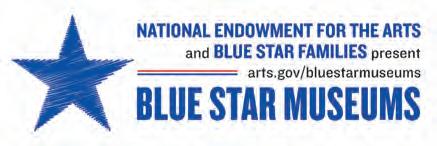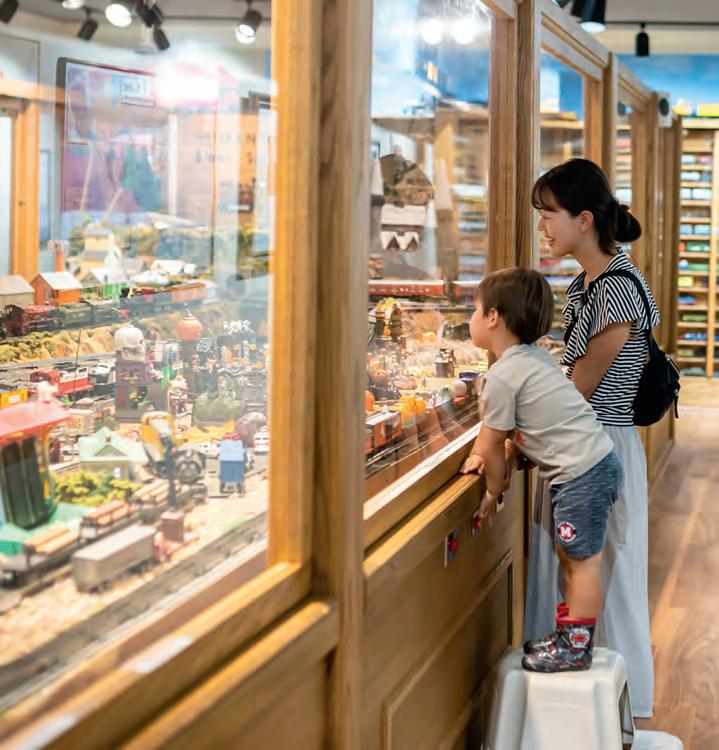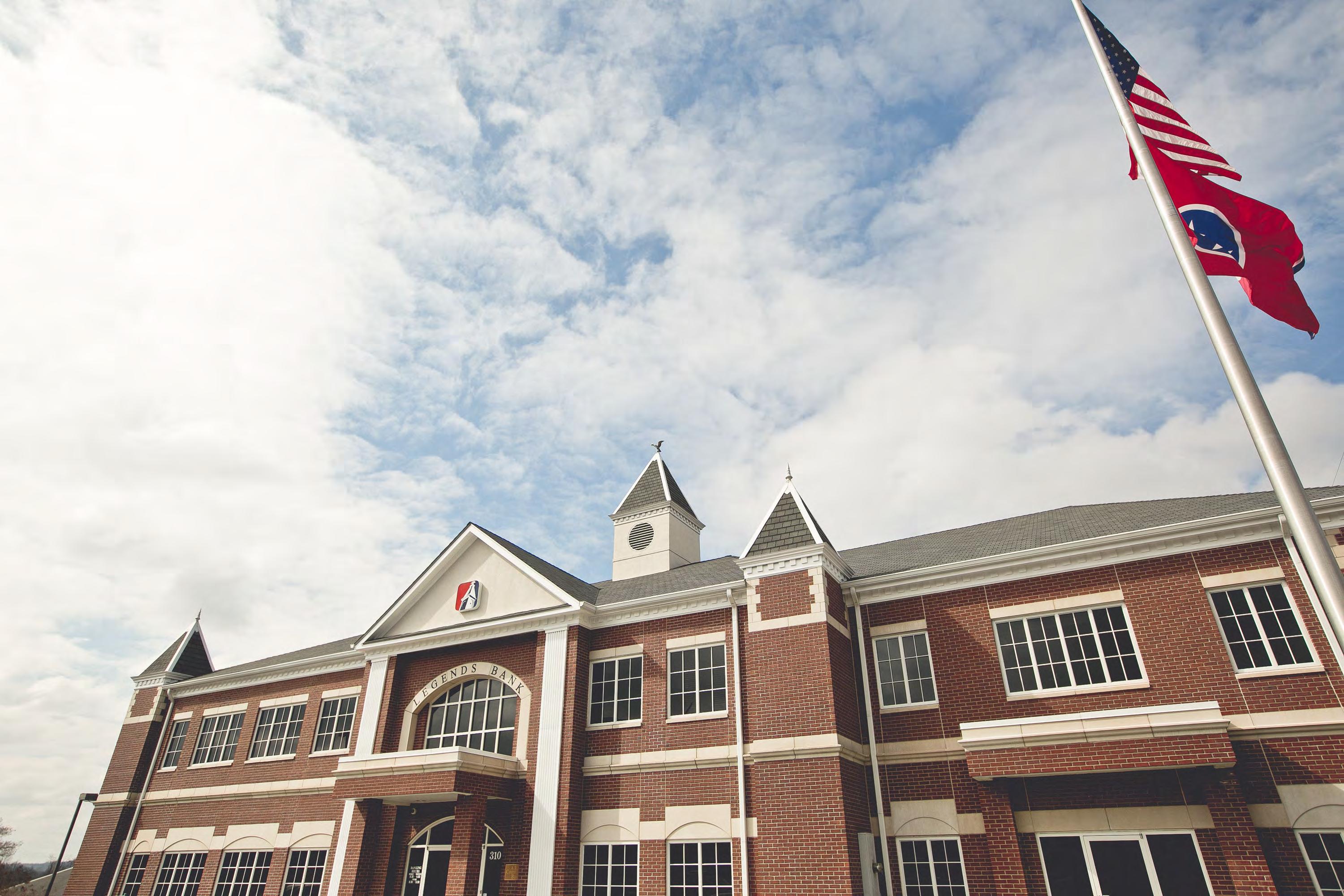




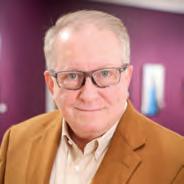
EXECUTIVE DIRECTOR
Frank Lott
MANAGING EDITOR
Becky Wood
ART DIRECTION & DESIGN
April Papenfuss
MARKETING COMMUNICATIONS
Myranda Harrison
CONTRIBUTING WRITERS
Brendalyn Carpenter Player
Cresta McGowan
Andrew Ross
The mission of this publication is to foster creativity and champion our area’s unique cultural diversity. SECOND & COMMERCE expands the Customs House Museum & Cultural Center’s purpose through supporting the arts community, exploring local history and telling stories about the past, present and future of Clarksville.
HOURS OF OPERATION
Tuesdays–Saturdays
10 am–5 pm
Sundays 1–5 pm
Closed Mondays
customshousemuseum.org
@customshousemuseum
#customshousemuseum
Most often, I write my Director’s Letter with a focus on an aspirational theme, such as where the Museum is going or how important it is to engage with our members and visitors. However, during the editorial planning for this issue, a sublime memory popped up and I just couldn’t pass on the opportunity to share it with you. It connects my past with one of our feature stories.
I always wanted to play drums. As early as I can remember, seeing and hearing drums in marching bands, orchestras, jazz bands or combos… I just couldn’t get enough. When I was ten, my parents reluctantly gave me a snare drum on a stand and one pair of sticks—and bought themselves several sets of ear plugs. That was it, I was a drummer at last.
Or so I thought. In reality, there was music to learn and practice, practice, practice. I hung in there for about as long as could be expected of any ten-year-old, and being self-taught, I hit the proverbial wall. My interest reawakened when I took band in junior high. This was 1965, I was 14 and ready to rock. The music scene among teens in Hopkinsville, Kentucky was emerging fast because… the Beatles had arrived! I was going to challenge Ringo Starr.
Three of my neighborhood buddies and I decided it was time to “band-up” and, somehow, we pestered our parents into anteing up hard-earned money on instruments—electric guitars, amplifiers, a saxophone, a small electric keyboard and yes… DRUMS! My first full kit.
My first drum kit came from Collins Music Store in Clarksville. It was metallic, cherry red. Sam Collins himself demonstrated it for me, and as I was told, he did so with most every instrument he sold, including many harmonicas I purchased from him in later years. I had no idea that just a couple years prior, a certain young GI stationed at Fort Campbell was a return customer. This aspiring musician had a meteoric career, although with a tragic ending… Jimi Hendrix.
My music career was nowhere close to the legendary Hendrix, but it did cover my high school years from ’66 to ’69 playing sock hops, birthday parties and occasional out-of-town gigs. When college, career and family shifted my focus, I sold that Collins Music drum set to another young, aspiring drummer.
But my love of drums still burned, and about 25 years ago in 1999, I bought a new set thinking my oldest son would be my drumming prodigy. I bought this kit from Charlie Koon at Mary’s Music, also right here in Clarksville. This drum kit is a beautiful blue metallic, made by Pearl. It doesn’t get played much, but it just looks stunning sitting here in my studio.
Enjoy this issue of Second & Commerce!

CUSTOMS HOUSE
Larry Richardson, Chair
Dan Black Vice Chair
Frazier Allen
Kell Black
Joe Creek*
Kyong Dawson
MUSEUM & CULTURAL CENTER BOARD OF TRUSTEES
Darwin Eldridge
Carolyn Ferrell*
John Halliburton
Tracy Knight
Lawson Mabry
Deanna McLaughlin*
Linda Nichols
Nick Nicholson
Jane Olson
Brendalyn Player
McClure Poland*
*denotes ex-officio
This Flying High Signature Painting commemorated the Customs House Museum & Cultural Center’s 25th year. Purchased in memory of George Dakota Lee Wofford (1999-2005), the painting was donated back to the Museum by the Wofford Family for the enjoyment of all. This June, the Museum will officially celebrate 40 years.


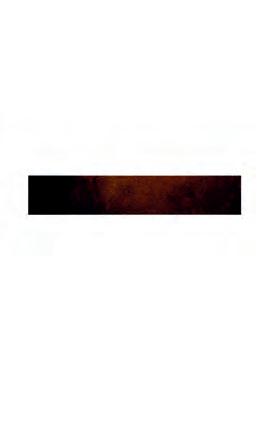













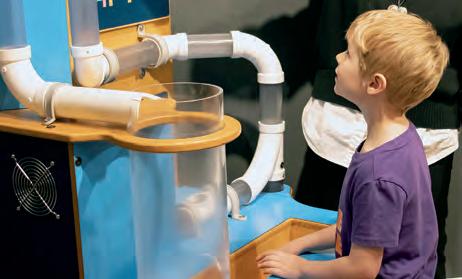
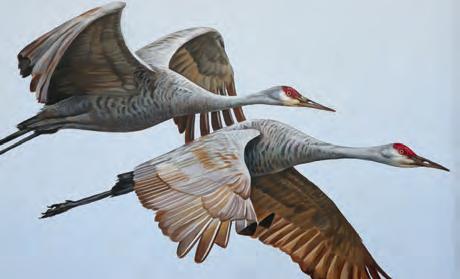

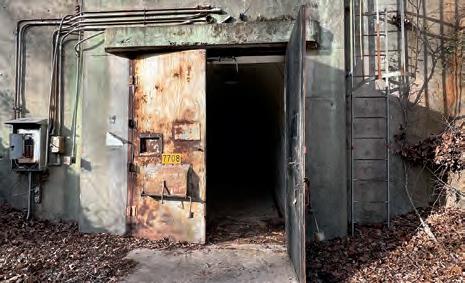
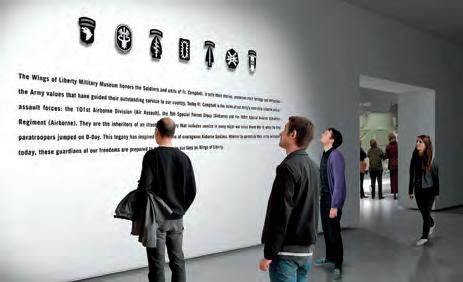
The Customs House Museum & Cultural Center is home to over 20,000 artifacts, documents, photographs and works of art. As we continue to celebrate the Museum’s 40th year, read more about the preservation pillar of our mission.
In 2023, several local organizations received funding from Google’s Data Center Community Grants Program. Take a closer look at these Montgomery County projects and initiatives, including new exhibits and programming at the Museum.
As both a painter and a sculptor, Cindy Billingsley uses different mediums to tell a story through her wildlife art. Her newest exhibit, The Wonderous Beauty of Birds, is on view at the Customs House Museum & Cultural Center from May 3 to July 24.
It has been 25 years since the 1999 tornado blew through Clarksville, taking several downtown businesses with it. This disaster was the beginning of the end for Collins Music Store, but its power as a community hub is still felt decades later.
Step inside Clarksville Base, a structure deep within Fort Campbell built to keep the nation’s nuclear weapons secure and ready for use. Nicknamed “The Birdcage,” these bunkers still stand today and remain a valuable look into the past.
Construction begins this summer on the long-envisioned Tennessee Wings of Liberty Museum that will educate, honor and inspire by sharing stories and experiences of those who have called Fort Campbell home. The first phase of the museum will open to the public in 2025.

Learn about Museum exhibits, programs and more at customshousemuseum.org.
Rising Voices 3: The Bennett Prize for Women Figurative Realist Painters THROUGH APRIL 21
Ayana Ross: The Lessons I Leave You THROUGH APRIL 21
From Here to There: Presented by Google THROUGH APRIL 24
Tonya Fleming: Up Close Far Away THROUGH APRIL 28
Month of the Military Child Art Show THROUGH APRIL 21
Wood, Paper, Paint: Collecting Art for 40 Years
APRIL 2 - JUNE 2
Flying High Signature Art
MAY 1 – AUGUST 11
Cindy Billingsley: The Wonderous Beauty of Birds
MAY 3 – JULY 24
The Beerakudas: Art of Bill Henig
MAY 7 – JULY 28
Triumphs and Treasures: Celebrating 40 Years
MAY 14 – SEPTEMBER 29
Marking the 80th Anniversary of D-Day
JUNE 1 – JULY 28
Tennessee Watercolor Society 2024 Biennial Juried Exhibition
JUNE 6 – JULY 28
 Untitled Max Hochstetler
Untitled Max Hochstetler
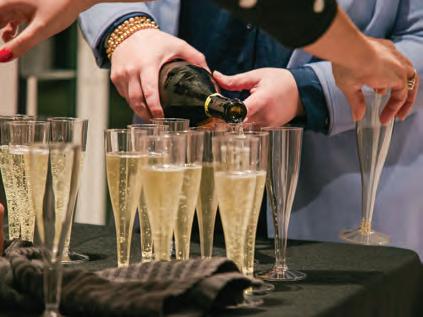
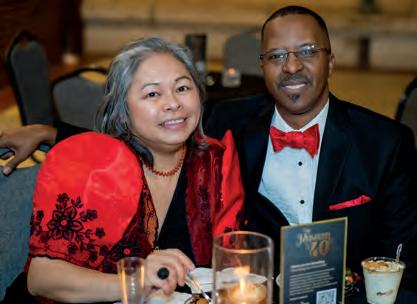
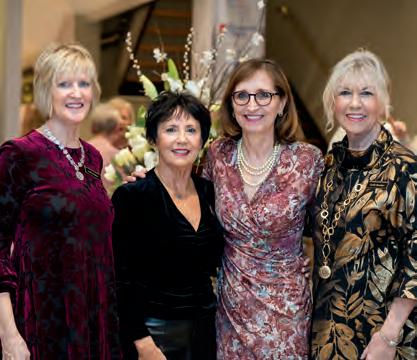

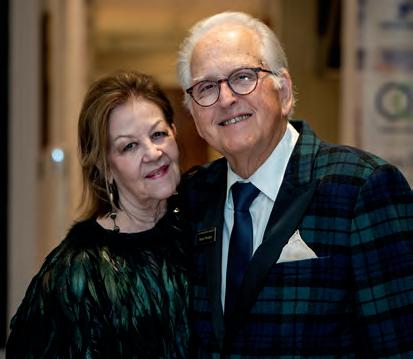


On February 2, Champagne & Chocolate returned to kick off the Museum’s 40th anniversary year. Together, we raised over $25,000!
In between bottles of bubbly, guests enjoyed the piano stylings of Sam Isaacs and tried their luck in the bourbon pull and silent auction, featuring unique gift baskets and one-of-a-kind works of art by artists Yvette Campagna, Karla Tucker Campbell, Larry Cole, Janet Felts, Lynne Waters Griffey, Kitty Harvill, Ron Jackson, Stacy Mobley, Todd Saal and David E. Smith.
The Museum is so appreciative of every sponsor, guest, artist and Guild member for making this fundraiser such a success. All proceeds from events like Champagne & Chocolate directly benefit the Museum’s mission and support everything from artifact conservation to educational programming.
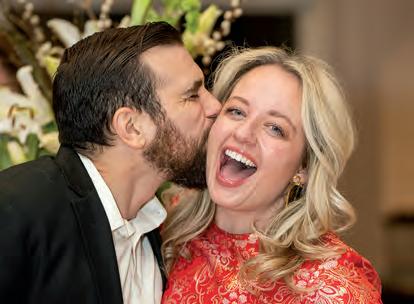
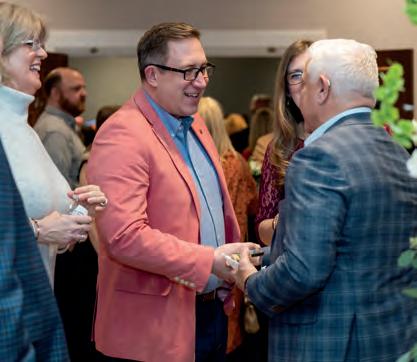

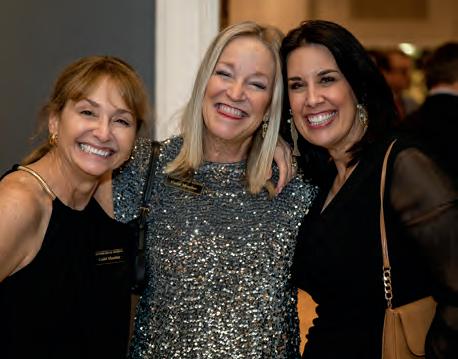
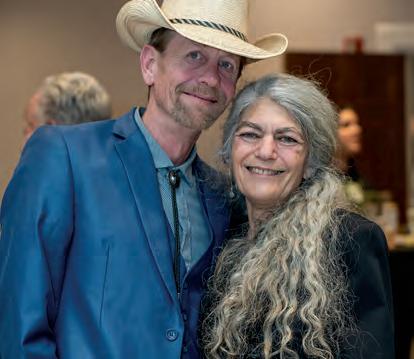 PHOTOS BY LUCAS CHADWICK
PHOTOS BY LUCAS CHADWICK
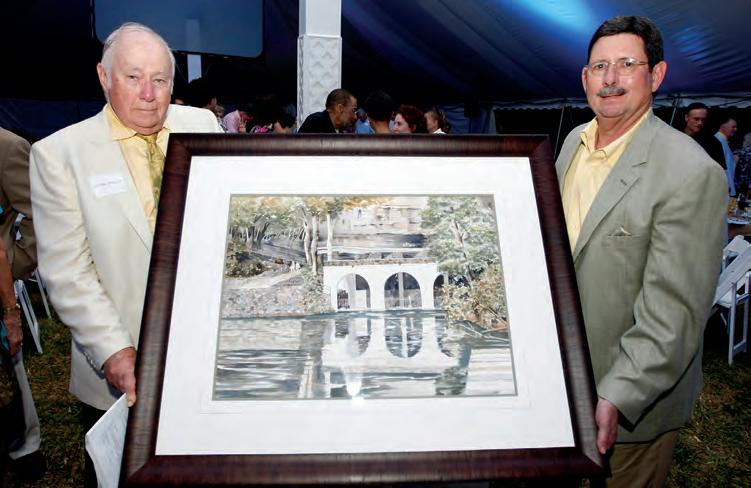
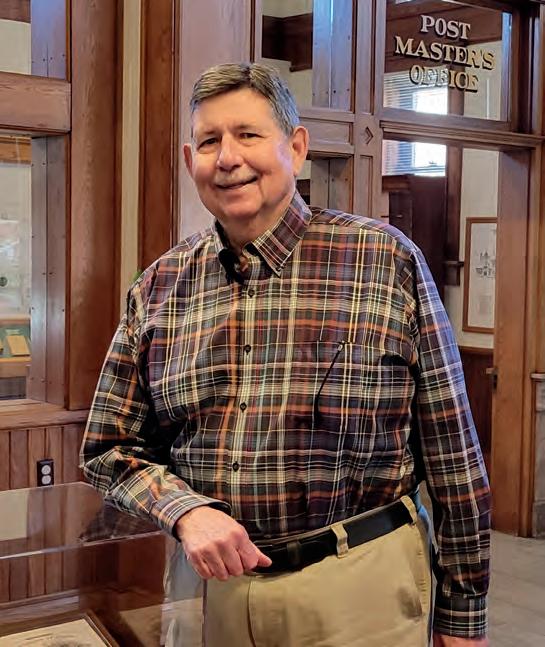
“I always liked historylocal history, state history. Getting involved with the Customs House Museum was a natural fit.”
PLENTY OF PEOPLE CLAIM THAT THEY “TAKE THE BULL BY THE HORNS,” FACING TOUGH SITUATIONS WITH RESOLVE. BILL HOY IS ONE OF FEW THAT CAN SAY SO LITERALLY.
It is difficult to pin down a singular way to describe him: community advocate, banking professional, rodeo hall-of-famer and longtime Customs House Museum member, including stints on the Board of Trustees and Foundation Board. As the Museum continues to commemorate a milestone birthday, we recognize how Bill Hoy has served the organization through many of the benchmark moments of the last twenty years.
Originally from Gallatin, Hoy first made his way across Middle Tennessee to attend the University of Tennessee at Martin. He would pass through Clarksville from time to time on the drive, unaware that what once served as a liminal space would soon enough be his lifelong home. “When I was in Gallatin, we always considered Clarksville part of West Tennessee,” said Hoy. “But when I was at Martin, they considered it to be in East Tennessee!”
A cowboy at heart, Hoy joined UT Martin’s rodeo team as a steer wrestler, where he (you guessed it) was tasked with grabbing a steer by its horns and wrestling it to the ground. Martin was part of the first intercollegiate rodeo held east of the Mississippi, along with Middle Tennessee State University, Tennessee Tech University and Austin Peay State University.
Hoy graduated from Martin with a degree in animal science, intending to return to his roots as a farmer. “I wanted to go back home to work on my grandmother’s farm—tobacco, cattle and sheep—but farming was going through a tough time,” he explained. “She told me that I needed to go find ‘public work,’ which is what they called anything outside the farm.”
He got a job with the Robertson County Farm Bureau, then moved to Clarksville in 1979 for a job at First Trust and Savings Bank. Beyond road trips to and from college, Clarksville actually holds a special place in Hoy family history. When he told his mother about his new job opportunity, “The first words out of her mouth were ‘You have to go to Dunbar Cave! Daddy and I used to go there.’”
A photo album of his parents' trips to the cave and resort continues to be a prized possession.
Hoy quickly fell in love with the community and became invested in its progress, as he has seen the city grow tremendously. “Clarksville has so much to offer—we're the fifth largest city in the state! A lot of people don’t realize that,” he said. “We have such a diverse community, and we’re incredibly fortunate.”
He was working at a bank branch in New Providence when the Kiwanis Club was starting a new chapter in the neighborhood. He became that club’s first president, and has been involved with the organization ever since, later transferring to the Downtown Clarksville club. Serving kids right here in Clarksville, Hoy is especially proud of Kiwanis projects like the annual Christmas baskets of toys and clothes provided for local children in the HeadStart program, and the Reading Rodeo, which works with the Montgomery County school system to distribute books to over 3,000 third graders each year. In 2020, he was instrumental in the club’s pledge of $150,000 to the Museum’s Explorers Landing renovation.
Hoy first joined the Museum Board of Trustees in 2006 after some gentle prodding from then-executive director Ned Crouch. “Growing up, there was no museum in Gallatin. In grade school, we would go to the State Museum in Nashville on field trips. I always liked history—local history, state history.” Getting involved with the Customs House Museum was a natural fit. “I was always coming here for different events, and got really involved with the Reelfoot Lake exhibit.”
Hoy was chairman of the Museum Board when he had the idea for the first Champagne & Chocolate fundraiser in 2010, inspired by a Valentine’s event he saw in Kentucky. Recruiting Dianne Albright, Britney Campbell and Becky Keene (known for her homemade chocolate sauces) as the inaugural co-chairs, the event brought a fundraising focus to local art, custom jewelry and great food right here at the Museum. Hoy secured Legends Bank as the pioneering sponsor.
That first event was a major success, raising almost $10,000, and has continued to be the Museum’s second-largest annual fundraiser. “I really owe it all to Becky Keene, she got it jumpstarted,” said Hoy. “If you know about anything that Becky was ever involved in, she always gave 110%.”
That same year, the signature artwork at Flying High was a Peg Harvill watercolor of Dunbar Cave. Hoy was the winning bidder—a meaningful tribute to his mother. During his tenure on the Board, he was a key element of other Museum projects, such as restructuring the membership levels and introducing Eagle memberships, a $1,000 annual commitment. The Museum currently has 23 Eagle level members, and hopes to reach 40 by the end of 2024.
Hoy was involved in the beginnings of Legends Bank, which opened in 1998. He went on to become a senior vice president at the bank and retired in 2016. Now, he continues his connection to the Museum as a member of the Foundation Board, which manages the Museum's long-term financials and oversees special bequests and planned giving, ensuring the organization’s sustainability into the future.
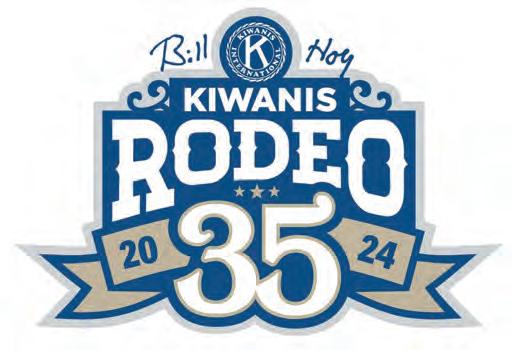
In 2010, Hoy was named a UT Martin Outstanding Alumni. In 2015, he was inducted into the university’s Rodeo Hall of Fame. Following this honor, the annual Clarksville Kiwanis Rodeo was renamed the Bill Hoy Kiwanis Rodeo, for which he feels exceptionally humbled. Modest as they come, Bill Hoy has cemented himself into the history of this town through decades of community advocacy and volunteerism.
“You know what they say: you have to know and preserve history to know where you’re going,” said Hoy. “I'm a true believer in that. We learn from our history.”
Become a Museum member today! Enjoy amazing benefits, such as free admission for an entire year, invitations to members-only events, special discounts and more.
customshousemuseum.org/become-a-member

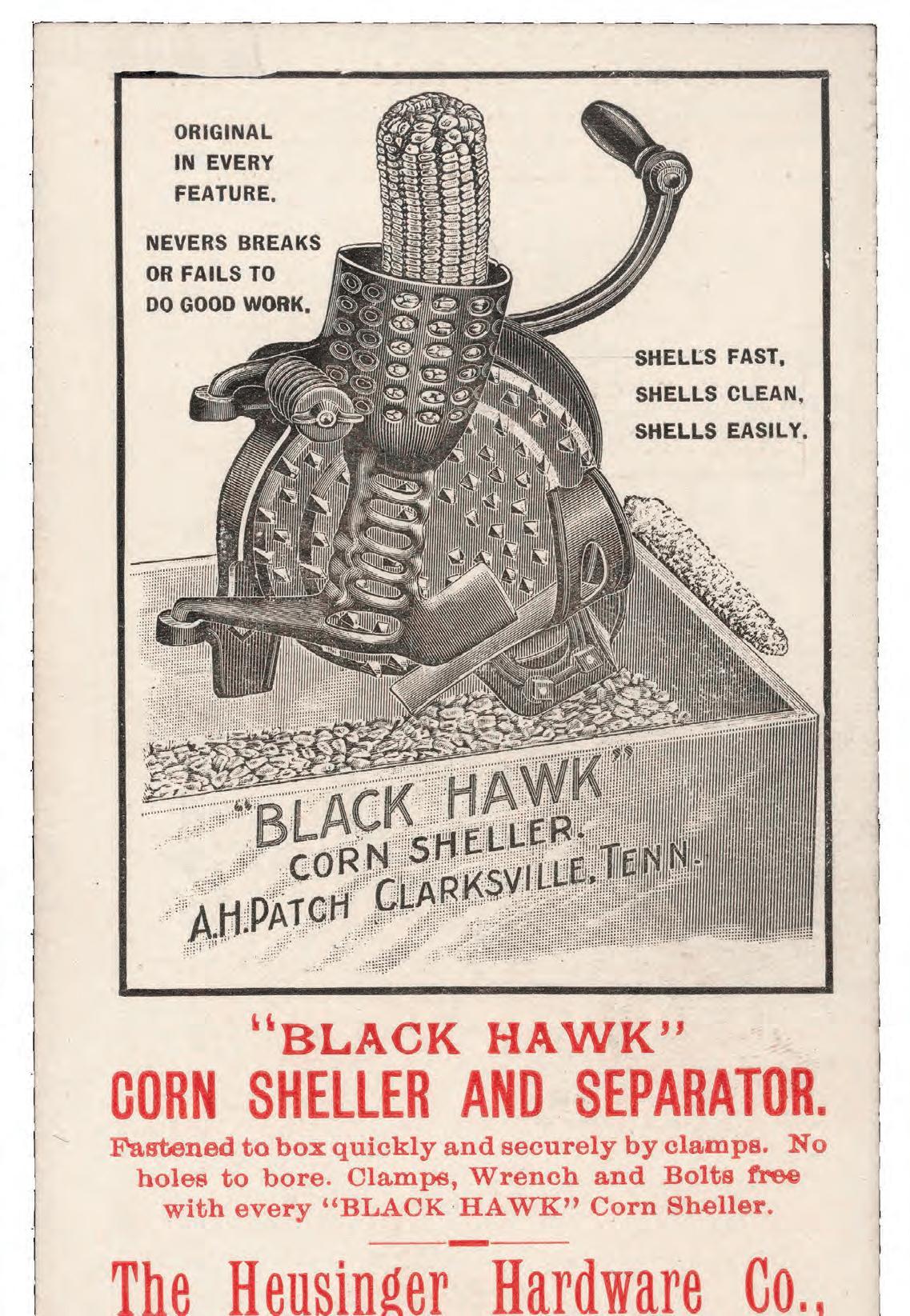
THE CUSTOMS HOUSE MUSEUM & CULTURAL CENTER IS HOME TO MORE THAN 22,000 ARTIFACTS, DOCUMENTS, PHOTOGRAPHS AND WORKS OF ART. Our collections include everything from sketches by F. Luis Mora to photographs by Nora Witzel, Boehm porcelains to relics from the Clarksville Foundry, documents from the First Women’s Bank of Tennessee to sculptures by Olen Bryant.
Since even before we first opened our doors 40 years ago, part of our mission has been to collect, preserve and interpret historic, artistic and scientific material. While many of these items are primarily related to Montgomery County, Tennessee, the items in our care span the country and the globe—all while spanning centuries.

Our collections are for the benefit of the public, and the Museum encourages explorations of our collections through research to foster cultural understanding. Artifacts are preserved, documented and carefully managed according to professional standards, so that they may be viewed, researched and appreciated now and into the future. The Museum’s archives have been built from generous donations from individuals, businesses and community organizations, and these artifacts tell tales from large-scale significant events to personal family histories. Objects, documents, artwork and photographs all have a story to tell, and that story can impact our understanding and appreciation of culture. Knowing the who, what, when, where and why of an artifact enhances its ability to portray a culture or community at a given time and place.
Select artifacts featured here will be available to view in the exhibit Triumphs & Treasures: Celebrating 40 Years, on view from May 14 to September 29 in the Kimbrough Gallery.
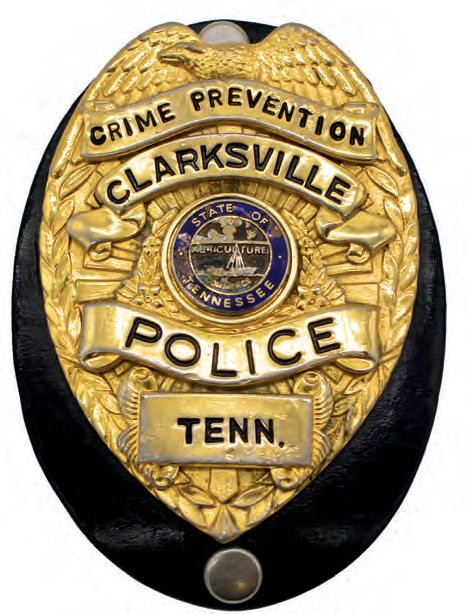









IF YOU ARE INTERESTED IN POSSIBLY MAKING A DONATION TO THE MUSEUM COLLECTION, CONTACT CURATOR OF COLLECTIONS MATTHEW SARNELLI AND COMPLETE A PROSPECTIVE DONATION FORM WITH A DESCRIPTION AND IMAGES OF THE ITEM. The Collections Committee will review all prospective donations to ensure the artifacts fit with collecting goals. This process may take up to three months. Artifacts will be considered for donation if the donor holds clear title to the artifact, it fits within the scope of collections, possesses potential for use, is in good condition, is free of legal constraints and is within the capability of the Museum to care for it.
customshousemuseum.org/collections/donate-to-collections/
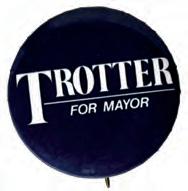
Advertising leaflet for Black Hawk Corn Sheller, ca. early 1900s | Accessioned 1983
Memorex flexible computer disk, ca. 1990 | Accessioned 2000
Crime Prevention Clarksville Police Department badge, ca. 1980 | Accessioned 1989
Dunbar Cave Swimming Pool postcard, ca. 1940 | Accessioned 1985
Certificate for stock in The First
Jet magazine featuring Olympian Wilma Rudolph, July 1969 | Accessioned 2003
“Trotter for Mayor” button, 1986 | Accessioned 1986
Royal York Hotel key, ca. 1940s | Accessioned 2016
Senate admissions ticket to President Andrew Johnson’s impeachment, April 1868 | Accessioned 1999


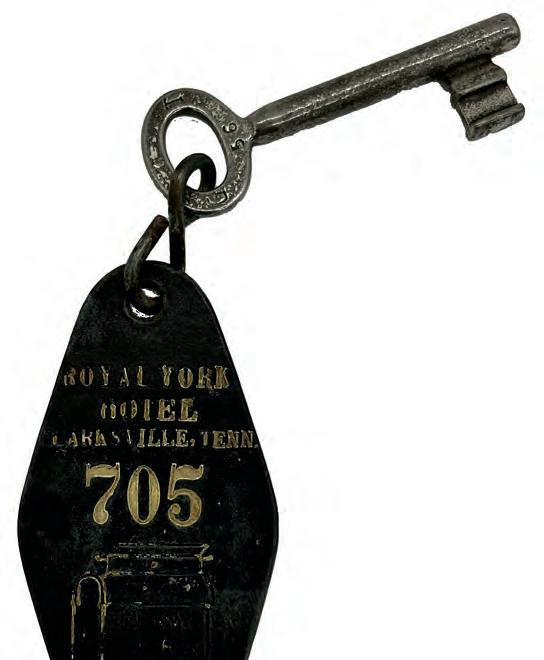
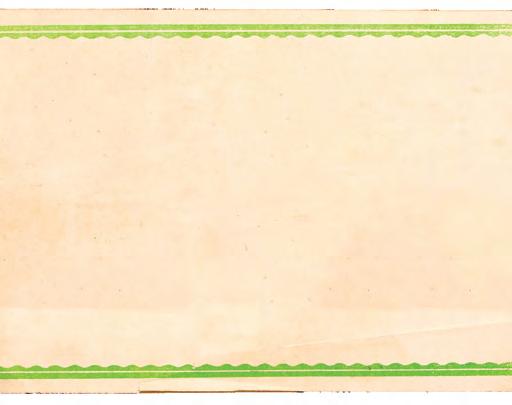
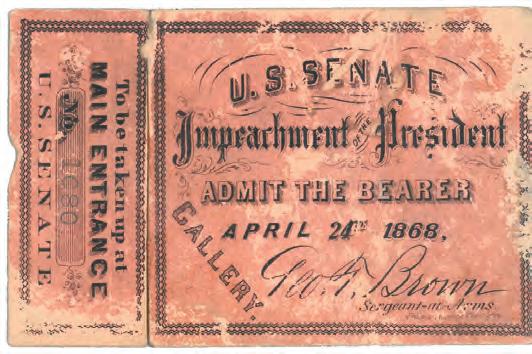

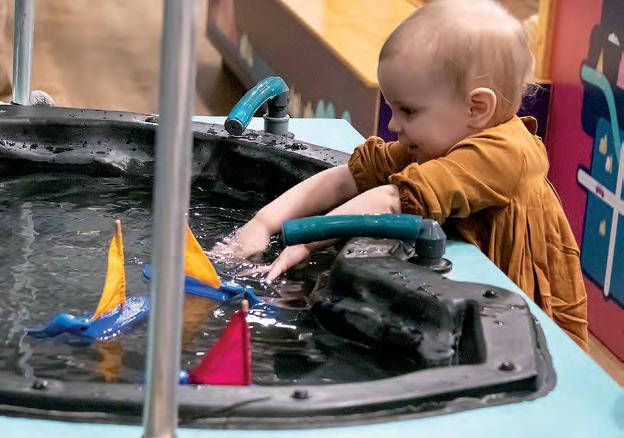


Google operates data centers all over the world, helping to keep the internet humming 24/7. In 2019, the Montgomery County data center opened for business, bringing a variety of new jobs and local initiatives to Clarksville.
In addition to ongoing environmental and educational ventures, the Data Center Community Grants Program provides funding to nonprofit organizations developing local solutions that help meet specific community needs. “Google is proud to offer these grants exclusively to the communities where we operate our data centers,” said Amber Tillman, Head of Data Center Economic and Community Development at Google, Eastern US and Canada. “Google has been supporting local nonprofit and educational organizations in Montgomery County since breaking ground on their data center campuses in 2017.”
In 2023, $180,000 was granted to local organizations from the Data Center Community Impact Program to support initiatives focused on STEM education, sustainability, veteran wellbeing and access to vital services. Local organizations that received funding included YAIPak Outreach, Soldiers and Families Embraced (SAFE), the Clarksville-Montgomery County School System, Ajax Turner Senior Activity Center, Bella's Closet, CMC Adult Literacy Council, Austin Peay State University, Manna Café Ministries and the Customs House Museum & Cultural Center. An additional $100,000 was given to the United Way of Greater Clarksville to support storm recovery efforts.
This essential funding has enabled the Museum to bring in two top-tier traveling exhibits, as well as launch a new free creative workshop for adults in partnership with APSU’s Community School of the Arts.
From Here to There opened on February 8 and explores the science behind how we move things on land, sea and air. From pulleys and levers to a hovercraft chair, kids and adults alike can learn something new through interactive stations. The exhibit has been a major draw for educators. By the time the exhibit closes on April 24, nearly 2,800 local students will have experienced the hands-on field trip. Ranging from Pre-K through 8th grade, classes from over 30 schools throughout Clarksville, Fort Campbell and surrounding counties have made the special expedition to the Museum.
"You can tell this exhibit is a hit with the kids from the noise and excitement pouring out of the gallery,” said Stephanie Stafford, Curator of Education. “We are thrilled that we can provide an interactive STEM exhibit that schools and families get to share with children. From Here to There has ten hands-on stations that support many of the Physical Science standards taught in school, but even more importantly, that fill their minds with wonder."
Opening in November of this year, the Museum will welcome Water/Ways a traveling exhibition that dives into water as an essential environmental, cultural and historical component of life on our planet.
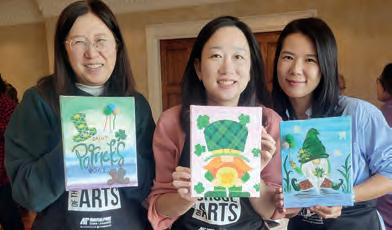
“The themes of these two exhibits are great fit for our audiences,” said Museum Executive Director Frank Lott. “Clarksville is a river town in the truest sense of the moniker. Located at the confluence of the Cumberland and Red Rivers, we are an intermodal community with direct links to navigable rivers, railroads, interstate highways and airways. The opportunity to bring high-quality traveling exhibits to the Museum greatly depends on grants like this. Now, as a Google Data Center community, we are very grateful to Google for funding these outstanding projects.”
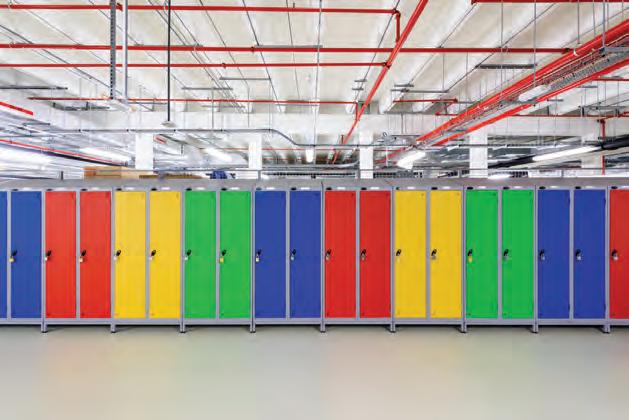

APSU’s Community School of the Arts received funding to extend their mission beyond campus and deeper into the community, so they teamed up with the Museum to produce a new series of art-making workshops for adults that are completely free for all participants. Sunday Studio is hosted by CSA every third Sunday at the Customs House Museum & Cultural Center, and local artist Sarah Spillers takes guests step by step through a new themed project every month. Spots fill up fast, so remember to follow the Museum on social media to know when registration opens for each workshop.
These projects are just a glimpse at what is achievable at the junction of local industry and philanthropy.
“The Customs House Museum sparks curiosity and encourages life-long learning,” said Tillman. “Google is thrilled to support these two exhibits that will inspire visitors, young and old, to think critically about the world we live in and how it works.”
From Here to There is a traveling exhibit developed by the Rochester Museum & Science Center and the Sciencenter of Ithaca, New York. Water/Ways is part of the Museum on Main Street, a collaboration between the Smithsonian Institution and state humanities councils nationwide.
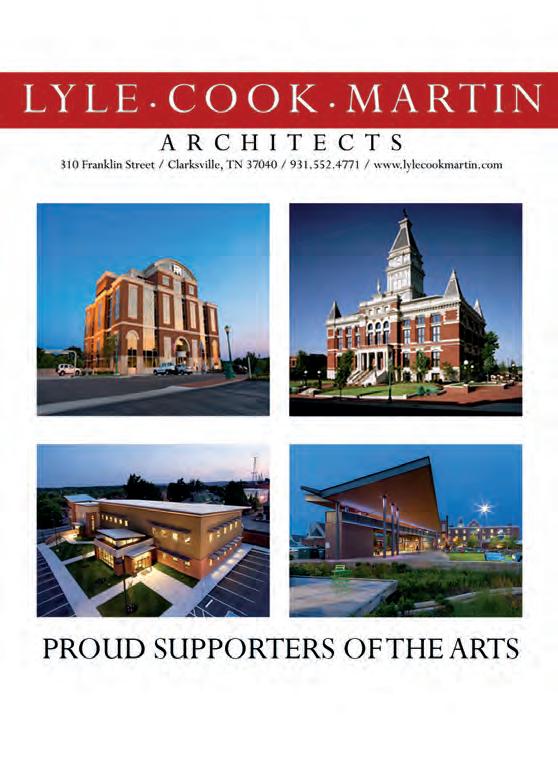

The newest exhibit from Tennessee artist Cindy Billingsley celebrates all things avian through paintings and sculptures. Billingsley spent the first 15 years of her career focused on portraits, with her interest in sculpture piquing after seeing an exhibition on Auguste Rodin and Camille Claudel. She studied at the Harris School of Art in Franklin, Tennessee and at Watkins College of Art and Design, and went on to be an apprentice under nationally known sculptor Alan LeQuire in Nashville.
Often working in thematic series, Billingsley uses her bodies of work to bring awareness to causes that matter to her, such as endangered wildlife and Alzheimer’s disease. The Wonderous Beauty of Birds will be on view at the Customs House Museum & Cultural Center from May 3 to July 24.
SECOND & COMMERCE: To begin, can you tell us a little more about your artistic journey? What drew you to the arts as a kid, and what are the high points that carried you here today?
CINDY BILLINGSLEY: My mother got pastel portraits made of us when I was a kid, about 11. I was fascinated that someone could get a likeness in a drawing or painting—that sparked my interest, and I began to draw. When we moved to Tennessee when I was 12, my mom really supported my interest in art and got me lessons with a local private teacher in Franklin. Mary McDaniel was the teacher, and she taught a few kids in her home for an hour a week, drawing in charcoal and pastels.
Pastels were my first art medium, and portraits of people were my first subjects.
I did pastels for years, doing a portrait of someone almost every other day— mainly celebrities for practice. In high school, I was known as the one always toting around a painting. I started getting commissions for portraits in high school, and that is how I made my extra money for things like clothes and art supplies.
I wanted to go off to a big art institute, but my family didn’t have a lot for college, so there was a traditional art school down the street in Franklin. I did four years there in fine art and illustration—it was a great school and I learned a good foundation in human anatomy, having to draw and sculpt each muscle and movement. I started painting in oils and acrylics there, studied perspective, renderings of buildings, a bit of everything.
After art school, I did murals and portraits to make a living. When I was around 28 years old, a friend took me to a Rodin exhibit at Cheekwood, and from then on, I wanted to sculpt. I took a portrait sculpture class at Watkins, then apprenticed under Alan LeQuire in Nashville and did the production part of his studio lost-wax process for bronze for seven years. I pretty much stopped painting for ten years. I left there knowing how to sculpt well enough to do bronze public art, but didn’t have ten pieces already done in my portfolio to show committees to get a commission—and didn’t have the half a million dollars to cast ten new pieces to show them I could do it. So, I bought a kiln and learned fired clay sculpture building. This is when I started doing wildlife pieces. I did a body of wildlife sculptures, both surreal and realistic.
Then, my mother developed Alzheimer’s and I was having a hard time finding information about how to care for her or how it would affect her. That is where the idea of creating a body of work around the different aspects of Alzheimer’s came from. I got a venue for a solo show with the Tennessee Art League in Nashville, and this is when I could show both paintings and sculptures together for the first time. I created a 22-piece body of work, and each piece described a different aspect of Alzheimer’s—half paintings and half sculptures.
I always had an interest in animals since I was a kid. Since I had been sculpting animals, it only made sense to start painting them. So, I moved more toward being a wildlife artist... kept practicing, trying to get better. I entered national shows, applied for some top wildlife groups. I became a member of Artists

for Conservation, whose mission is to support wildlife conservation and wildlife organizations through art. I liked giving back and doing art for a greater purpose than just money. These top groups challenged me to improve and inspired me to research animals... which leads us to now.
S&C: This exhibit features a collection of birds that you have researched over the past 15 years throughout your travels. Are there specific bird encounters that stand out in your memory?
CB: I have worked down in Florida three to four times a year on painting projects, and I started going to local parks to walk and photograph birds. It was fun, because I never knew what birds I might see that day, or if I’d see any. One day, I was on one of those wooden boardwalks—I was looking around and hadn’t seen anything, and was a bit disappointed. Then, right

 Osprey Cindy Billingsley Acrylic
Willow the Barred Owl Cindy Billingsley Oil
Pelicans Cindy Billingsley Oil
Osprey Cindy Billingsley Acrylic
Willow the Barred Owl Cindy Billingsley Oil
Pelicans Cindy Billingsley Oil
in front of me, a pair of tricolored herons landed in trees—one on each side of the boardwalk, less than 15 feet away. I was so excited.
Ospreys are one of my favorite birds, and I started noticing what trees they would winter in each year, where some nested on light posts in parking lots of stores. Sandhill cranes are another favorite—in Florida, you can sometimes see them just walking around. So many houses and businesses are being built in Florida that a lot of these birds are getting killed along the road. Sandhill cranes mate for life, and usually come back to the same spot year after year to nest. One year, I saw two of them hanging out at a gas station all winter because they had built the station where their nest used to be. Sandhill cranes migrate down to a refuge near Chattanooga each winter, there are thousands there. I went with a photographer in 2021 to see them. To experience and hear that many was a once in a lifetime experience—a sandhill crane’s call can be heard from two miles away.
In 2021, I went to the Audubon Center for Birds of Prey in Florida, where they rescue and rehabilitate birds of prey. There, I saw this barred owl named Willow who I was immediately fascinated with. The owl had a genetic mutation called melanism, which made it have chocolate brown feathers and face coloring instead of the usual gray face. This past December, I felt I should paint that owl... sometimes I can’t really explain it, there will be a calling to do a certain painting. I did a painting focusing just on Willow’s face. Two days after I finished the piece, I heard Willow had died. It was almost like I was meant to paint it. I sent a print of the painting to Willow’s keepers there.
S&C: What is your research process when you prepare to paint a subject like a bird? Beyond experiencing the animal in person, do you do other ornithology work?
CB: I will study things like a bird’s size, movement and wing structure when doing a sculpture, because I have to be able to visualize the bird three-dimensionally. Lately, I have been really studying their wing movements, how different birds have different kinds and shapes of feathers. Some are sleeker, making them more aerodynamic, some have broader feathers.
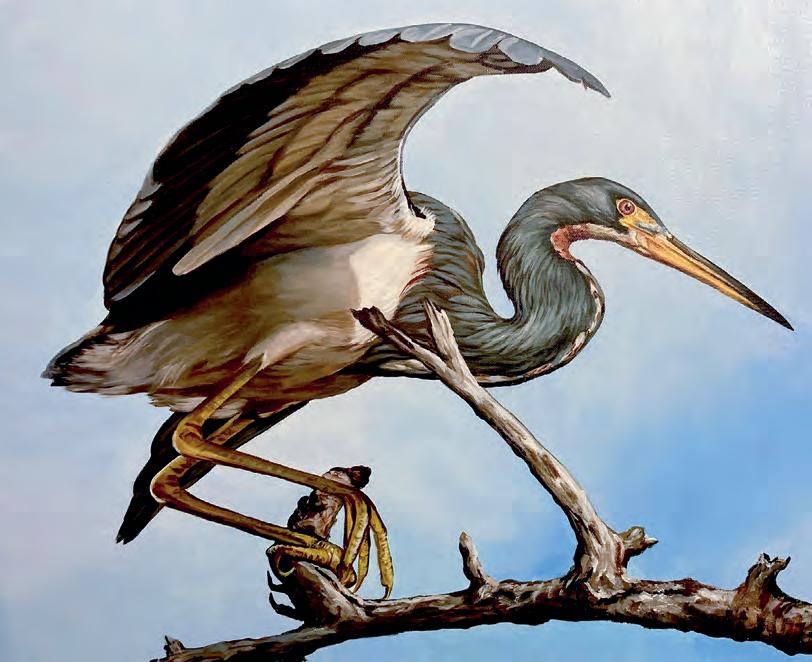
Some, like some owls, are completely silent in flight. Different skull shapes are great to study when doing a sculpture or a painting, because one needs to know form and structure to capture a bird or animal well.
I wanted to show a wide variety of birds in this show, and each one is fascinating in its own right. I got a bird feeder this winter, and watched each day to write journal entries and take photos of which songbirds came. I had about six different mating pairs come to winter in my yard—cardinals, titmouses, wrens, chickadees, house finches, towhees and downy woodpeckers—some of which are featured in this show. I will also go to bird sanctuaries and zoos to research subjects and see more exotic birds.
S&C: You have likened working in both paint and sculpture to speaking two different languages—you might be able to express an idea better with one over the other. How do you make that distinction when you sit down with a subject?
CB: I can tell you about a subject as a narrative with a painting. I am telling a story, or showing you a moment in time. If it is a subject that I think you might need to touch, be drawn closer to, see all of... I will sculpt it. With my bird paintings, I want to show you the moment I saw that bird—the bright Florida sunny day, how
the sun reflects off the feathers, the look on the bird’s face, the sandhill crane mom trying to keep up with her babies.
My humor comes out more in my sculptures. In some surreal series, I like to combine my skills in human and animal anatomy into one thing, like a lion businessman, or a horse being the equestrian rider. I did a sculpture series like this in New York City and sold them all. It has been exciting the past few years to have the opportunity to complete public art commissions where I got to do two life-size animals—a lion for the Brentwood Police Department, and an eagle relief bronze for the Cookeville Police Department. I really enjoy doing large scale and bronze sculptures.
S&C: You are a Signature Member of Artists for Conservation. How does your work intertwine with wildlife conservation and environmental education?
CB: We help promote wildlife conservation through our art, give to wildlife conservation organizations and teach about wildlife through art. AFC has a conference and art exhibit each year to promote wildlife art and education on conservation—it is a worldwide art group. For example, I donated an original painting to the Snow Leopard Trust auction this past winter and raised $700, on top of $900 raised last year for them.
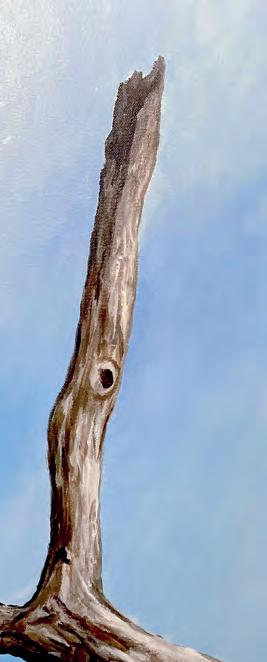
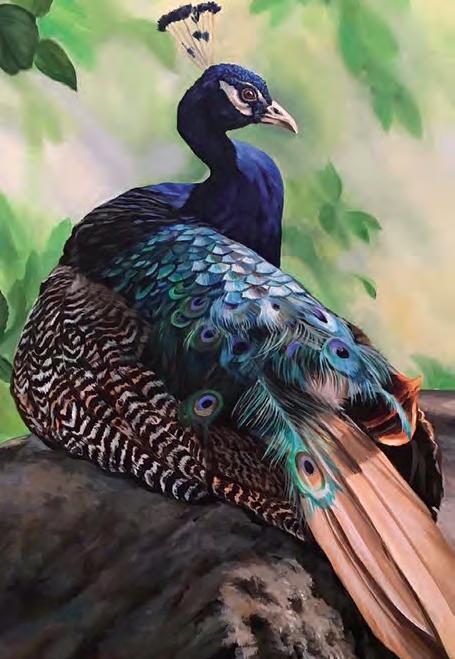
S&C: Is there anything that you hope our visitors take away from this exhibit?
CB: I hope they walk away being fascinated by the birds they can see right out their back door—all the different types of birds, and how each is unique in its feathers, flight and build. How they instinctively know how to migrate hundreds of miles each year, and how to survive in adverse climates and storms. How they care for their young, like how an eagle will sit on their nest in zero-degree weather covered in snow just to protect them. How birds can fly, hover and see great distances. How they have to adapt and live alongside us, while we forever expand and build into their habitats.
Billingsley’s work has been showcased throughout the country in galleries and museums, and can be found in several public and corporate collections, including in the city of Peru, Indiana, the Brentwood Police Department and Shenandoah University. She is a member of the Oil Painters of America and Artists for Conservation. The Wonderous Beauty of Birds is on view in the Orgain and Bruner Galleries from May 3 to July 24.
This interview has been edited for length and clarity.

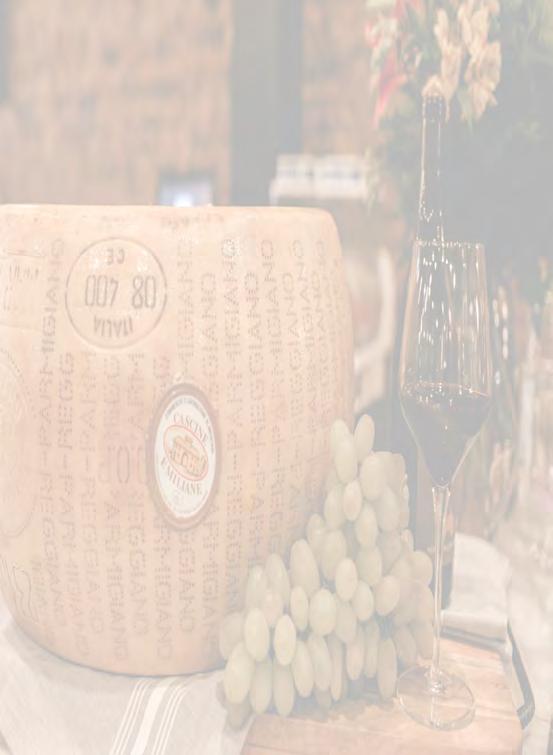

 BY ANDREW ROSS & BECKY WOOD
BY ANDREW ROSS & BECKY WOOD
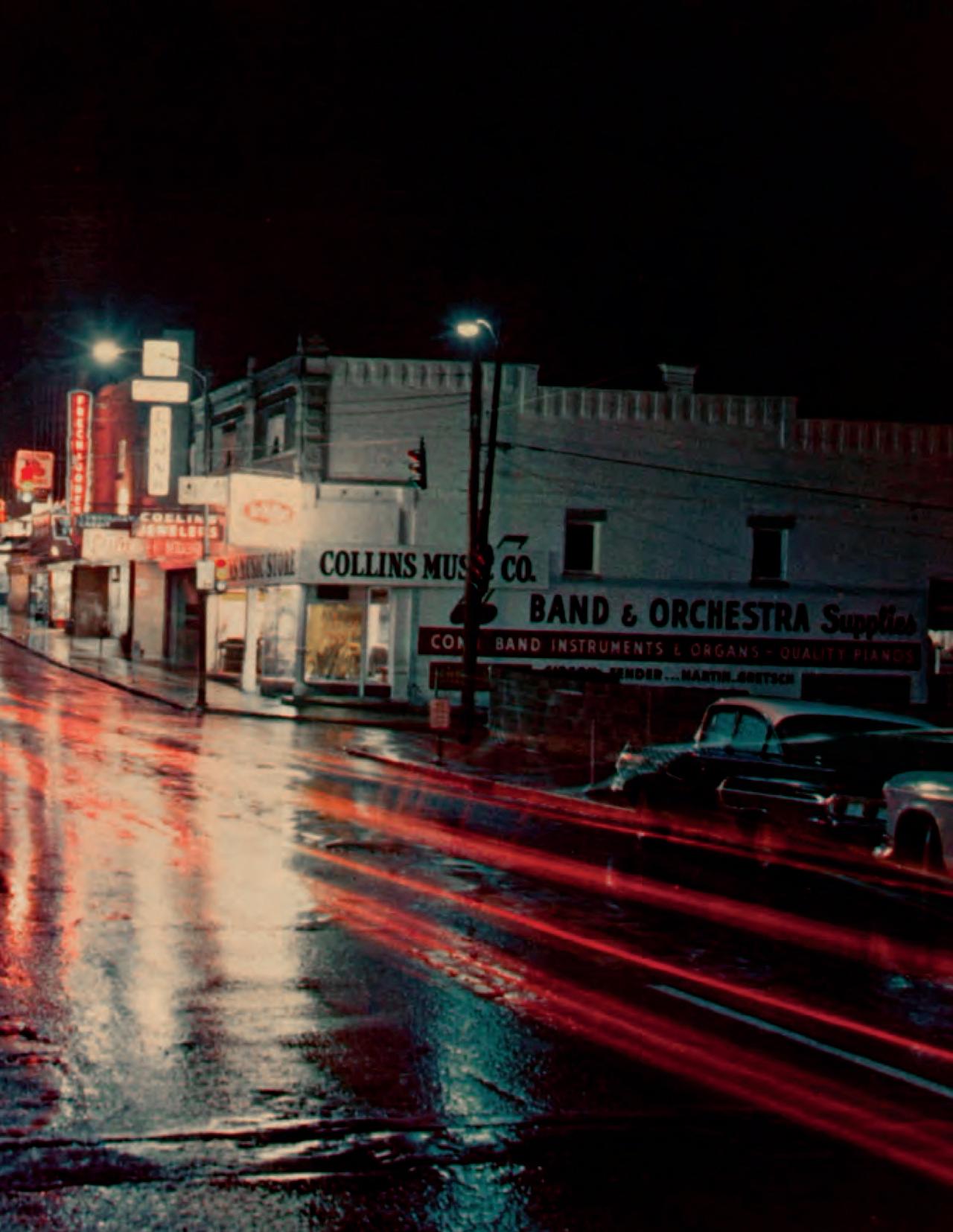 Photo of Third and Commerce Streets, 1965 Fairwell and Hail, 1965 Austin Peay State University Felix G. Woodward Library, Archives & Special Collections
Photo of Third and Commerce Streets, 1965 Fairwell and Hail, 1965 Austin Peay State University Felix G. Woodward Library, Archives & Special Collections


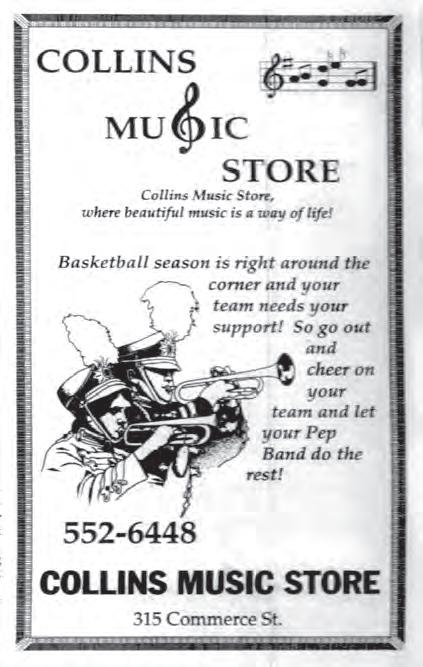

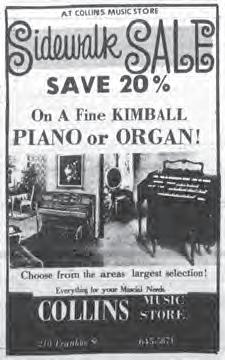
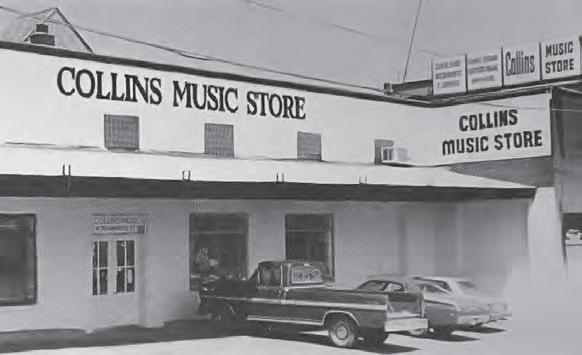
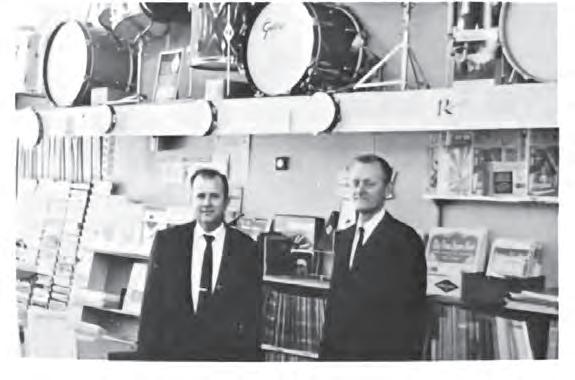
This was a tag line on a 1993 advertisement in The LeafChronicle for a once beloved and thriving mom-and-pop gem in the heart of Clarksville: Collins Music Store. While the devastating tornado of 1999 proved to introduce the final chapter for the store itself, the legacy of the store and its owner, Sam Collins, continues to live on in the hearts and minds of Clarksvillians.
These days, mentions of Collins are most often conjured in regards to a certain young Fort Campbell soldier who went on to become one of the most influential guitarists in the history of popular music. Jimi Hendrix’s trip to Collins Music Store in the early 1960s continues to be a celebrated part of Clarksville history, and while this anecdote may be the store's biggest claim to fame in the broadest sense, there is much more to the story of this Clarksville fixture. The countless number of people who were affected and positively impacted by their experiences at Collins Music Store is the heart and soul of its memory.
BEAUTIFUL MUSIC WAS INDEED A WAY OF LIFE FOR SAM COLLINS. His legacy was not only endeavoring to provide a music store with a wide variety of musical merchandise and services to the Clarksville community, but also to create a space where people could feel at ease, inspired and connected to other musicians. The store was for anyone with a desire to play.
First opened in the late 1940s, Collins was initially a watch repair and jewelry store with a few musical instruments available on the side. This was before acts like Elvis Presley and Chuck Berry came on the scene, and along with them, the explosion of rock 'n' roll. These artists not only changed popular music, but shifted the demand for playing instruments as well.
After artists like Elvis (who some claim visited the Clarksville store) and bands like The Beatles became household names, every teenager wanted a guitar, bass or drums. This resulted in a significant spike in interest for music stores around the country. Sam was in the right place at the right time.
The Leaf-Chronicle, 1960s-1990s
In 1977, Collins Music Store moved to 315 Commerce Street, where it stayed for over two decades until the tornado in January 1999. Courtesy of Randy Rubel
Before opening his store, Sam was somewhat of a renaissance man. He was born in White County, near Sparta, Tennessee. Early in life, he studied auto mechanics and welding. He was an engraver. He was a house builder with his father. He moved to Mobile, Alabama after finding employment at a shipyard. He was drafted into the army in 1943 at the peak of World War II, serving on the front line in the 26th Infantry Division. It was while he was stationed in occupied Austria that the idea of being a watchmaker and repairman occurred to him. After the
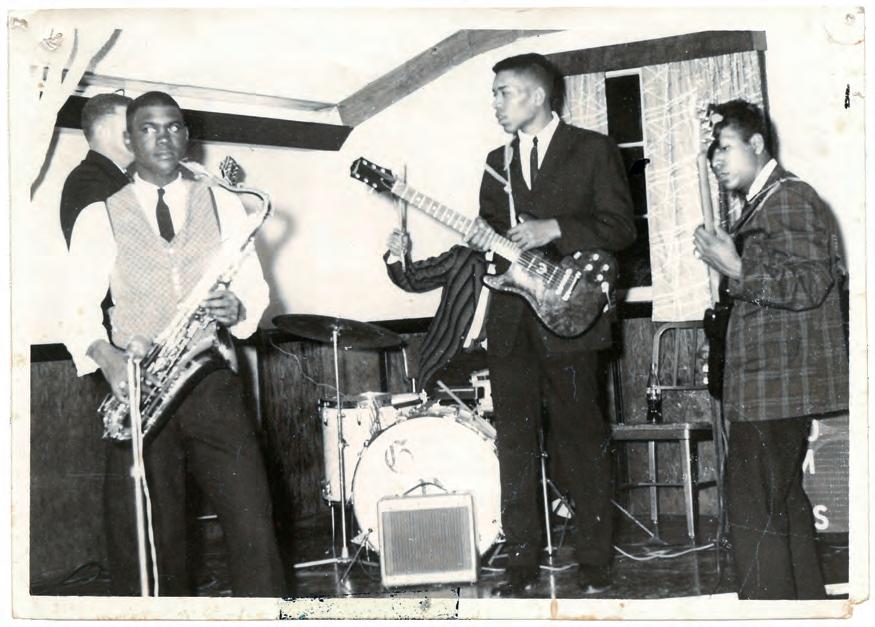
war, he opened a small jewelry store in Memphis, while also becoming part of a wholesale traveling jewelry business. He gave lessons on watchmaking to veterans. He co-owned a plane, which he flew in his leisure time.
Sam completed his army training at Fort Campbell, so when it came time to settle down with his family after the war, he knew where to go. “He decided that Clarksville was going to grow, especially because of the Army base,” said Sam’s daughter, Jean Collins Kendrick. “He felt that Clarksville would be a good town to do business in, so he moved there.” By the early 60s, another local music store decided to close, and Sam bought their inventory to expand the jewelry business into the full-fledged Collins Music Store.
COLLINS MUSIC STORE PROVIDED EVERY MUSICAL INSTRUMENT AND SERVICE THAT MUSICIANS IN CLARKSVILLE COULD ASK FOR. They stocked plenty of accessories, amplifiers, strings, and popular sheet music. They sold, repaired and tuned pianos. Brass, wind and percussion instruments could be rented for school bands. They were the only distributor in Clarksville and surrounding areas for some of the top guitar brands, such as Gibson, Martin, Fender and more.
Despite its size, Clarksville had a number of venues in the 1960s that featured live music. There were multiple clubs on base at Fort Campbell, and bars on either side of Highway 41A between Clarksville and the military base. As a result, every high school in town had one or more rock bands extremely eager to play in front of a live, if occasionally tipsy, audience.
Collins Music Store provided every musical instrument and service that musicians in Clarksville could ask for.
In 1961, Jimi Hendrix enlisted in the Army and joined the 101st Airborne Division stationed at Fort Campbell. Here, he met fellow soldier Billy Cox, who went on to join his band and make a name for himself as a rock ‘n’ roll bassist. Hendrix was granted a general discharge by June 1962, but he and Cox stuck around town, rented a house in Clarksville and formed a band called the King Kasuals.
As the story goes, at some point Jimi needed a guitar in a hurry and made his

Left:
Above: Collins Music Store moved to Franklin Street for a few years in the 1970s, further establishing itself as a fixture of downtown Clarksville. The Leaf-Chronicle, May 1973
way into Collins Music Store. Stories waver between whether the guitar was rented or bought in installments that he could no longer afford, but the instrument was eventually returned to Sam, and the lore of this exchange exploded with Hendrix’s later success.
Hendrix eventually left Clarksville to play in backing bands for artists such as Little Richard, Curtis Knight and the Isley Brothers. It was while playing in New York’s Greenwich Village that he was “discovered” by Chas Chandler, bassist for British Invasion group The Animals, and taken to England where The Jimi Hendrix Experience was formed, with Noel Redding on bass and drummer Mitch Mitchell. When Redding quit the band, Jimi called on his old Clarksville pal Billy Cox to take his place.
PEOPLE WHO REMEMBER SAM ALSO ARE LIKELY TO REMEMBER HIS TRUSTY RIGHT-HAND MAN AND FIXER OF ALL THINGS, LEON MOORE. Personable and mild-mannered, Leon always referred to Sam as “Mr. Collins,” despite the colleagues being approximately the same age. His reverence for Sam, the store and his work were always on display. Known in town as a top-notch repairman, Leon would fix anything from watches to guitars, saxophones to fiddles—even the odd garage door opener if someone was really in a pinch.
The Leaf-Chronicle, June 1989
In an article published several months after Sam Collins passed away, Leon Moore is pictured servicing a guitar in the last iteration of Collins Music Store on Academy Avenue.
The
November 2001



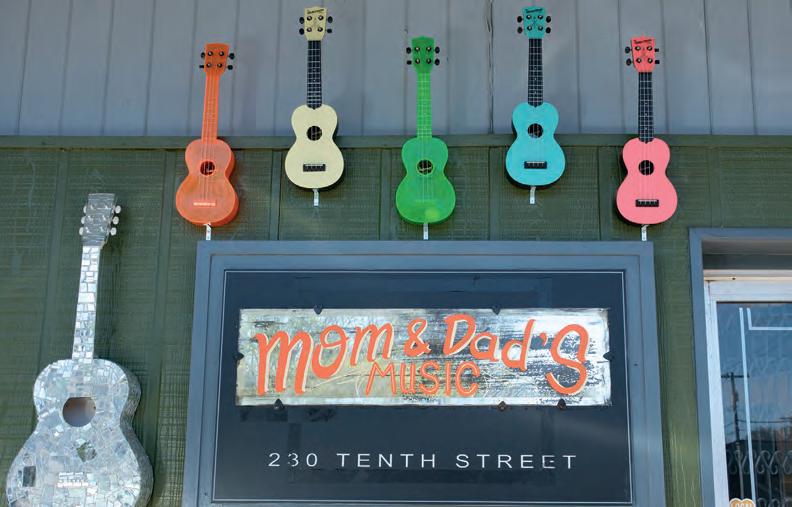
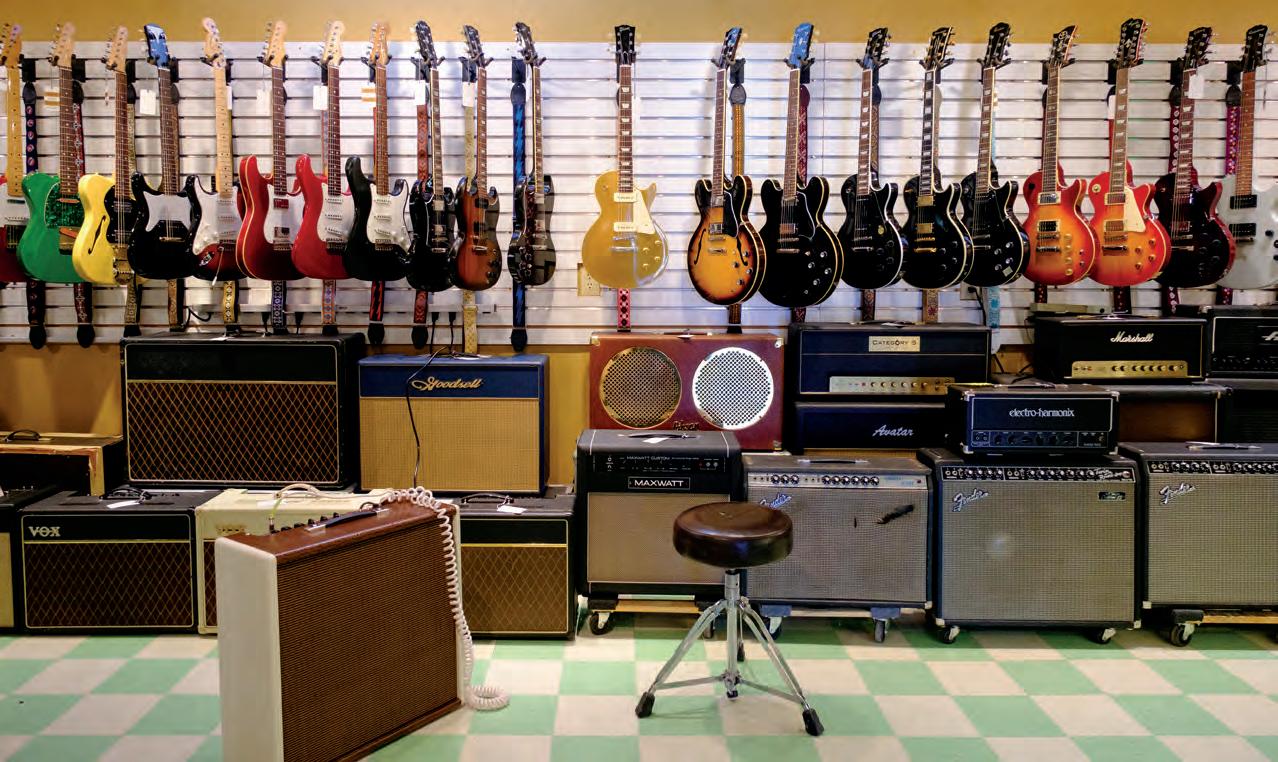
Many of Collins’ most valued customers went on to join the staff, and Sam was a true advocate for Clarksville musicians following their dreams. “I wanted a Fender Super Reverb amp, and Sam let me take it and try it out,” said Mark Hawkins, who went on to work at the store in the 1970s. “I took it home and was playing it in my garage. When my dad came home and heard me, he made me take it back.” Even when local parents may not have been the most supportive of young rock ‘n’ rollers, Collins Music Store provided an outlet and opportunity to play.
Former staff members and customers like Mark can tell stories for days about the cast of characters that made their way through the doors and the hijinks that would ensue. At the end of the day, Collins was the ultimate spot for local musicians to gather with likeminded people.
Monroe and Ralph Stanley. Sam would tune his grandmother’s piano and sold his family various guitars over the years.
“If you were looking for interesting, cool, old instruments, Collins was the place to go,” said Lloyd. Collins was an oldfashioned music store, the kind Lloyd would visit when accompanying his father on tour in different cities. The oldfashioned ambiance was something that resonated with him. At 15, after being a regular at Sam’s for years—some days
Mom and Dad’s Music. Carrying the Collins torch in many ways, the independent guitar shop is stocked full of top-quality instruments, old and new, and a keenly knowledgeable staff.
“I’m a Clarksville import, but have very clearly seen firsthand what it means to musicians in town to have a space to foster creativity and gather with likeminded folks,” explained Sarah Jones, co-owner of Mom and Dad’s Music. “What we’re doing centers around retail, but acts as far more than that on a daily basis. I’m always hopeful that we do so in a way that keeps the spirit of Collins alive in town.”
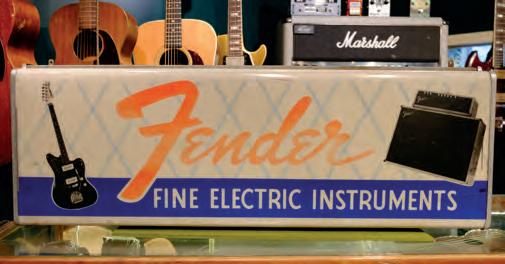
CLARKSVILLE. The store on the corner of Third and Commerce later became the Front Page Deli, and Collins called Franklin Street home for a few years across from the Capitol Theatre. It eventually found its way back to Commerce Street in the old Leaf and Grain Fertilizer Store. Its downtown location was a real bonus for Austin Peay students who played in bands and had no transportation other than their own two feet.
Collins was a quintessential local small business, and those that can withstand the test of time seem to find a way of embedding themselves into the fabric of any community. To Clarksvillians who remember Collins Music Store, it continues to have a glowing and steadfast place in their hearts and memories. One such local who shares this sentiment, and had the pleasure of working with Sam for many years, is none other than the co-owner of Mom and Dad’s Music on Tenth Street, Lloyd Nicely.
In 1991, at the age of eleven, Lloyd was already frequenting Collins Music Store, which by then was located in the old feed store downtown. Sam had known Lloyd’s father and grandfather, both musicians, the former of which toured as a professional bluegrass player with legends like Bill
staying there for hours at a time—Lloyd started working at Collins doing odd jobs, essentially in exchange for guitar strings.
“He would write you a hand ticket as a receipt, and I liked that aspect of that store,” Lloyd remembered. “It was a little bit dingy, a little bit dark... and you never knew what you were going to find in there.” On any given day, you could walk into Collins and hang with local musicians, discuss music, talk about gear and upcoming gigs, all while digging through and finding hidden treasures that had been there for years. “Sam had instruments that were literally brand new from the 1950s. It was the coolest thing I had ever seen in my life at that moment.”
The store developed a reputation for having classic vintage gear, such as 50s and 60s Gibson Les Pauls and Fender Telecasters that were still brand new—a quality that Lloyd stressed is extremely uncommon. And he would know, as he presently buys, repairs and sells some of the nicest instruments around. The city of Clarksville is fortunate in that it has no shortage of authentic mom-and-pop shops, not the least of which (and not without irony) is the undeniable gem of
In addition to learning about musical instruments, customer service and the general dayto-day operations of a music store, Sam taught Lloyd the importance of respecting his employees' passions and projects. He understood if an employee needed to miss work for a gig. “His motto was that if you have a gig, that’s your main thing,” said Lloyd. “I’ve adopted that at my shop. Everyone who works with me are all great people and top-notch musicians.”
Mom and Dad’s Music is part of Clarksville’s long history of music stores as important community hubs—a legacy largely started by Collins Music Store. Stores like Hutchinson-Williams expanded their reach beyond the downtown area in the 1970s and 80s, and Mary’s Music on Riverside Drive has been serving Clarksville musicians since the early 1990s. These stores live on in both memory and practice, thanks to a connection with their customers and the local music scene.
SAM COLLINS HAD THE FORETHOUGHT TO HOLD ON TO THAT RECEIPT SIGNED BY A YOUNG JIMI HENDRIX. He kept it in a binder in a filing cabinet next to his desk, and a copy of it famously hung in the Front Page Deli for years. When he heard a talented guitarist, or there was a customer that he had a great affinity for, Sam would pull out the binder and have the guitarist autograph their name on a separate piece of paper, right next to Jimi’s. It was a memorable experience for any guitar player, and is just a small example of how Sam would connect with his customers.
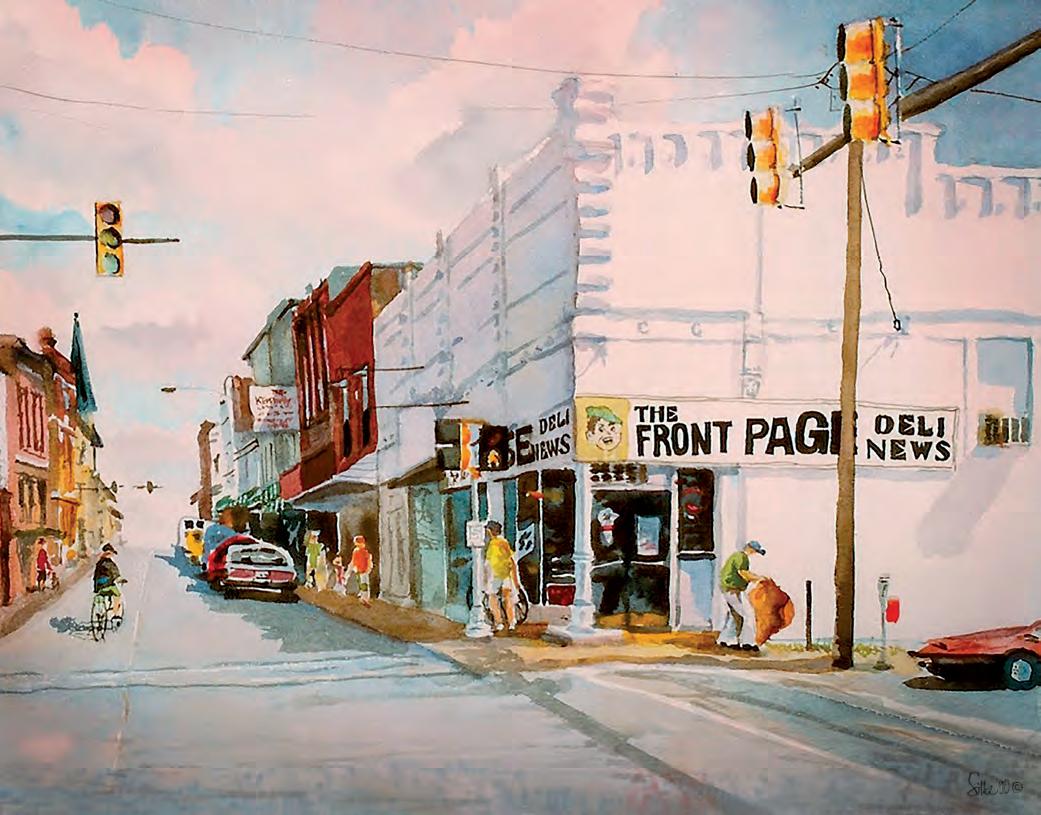
Musical tastes have changed since the true heyday of Collins Music Store. Many local venues switched from live music to DJs as disco came and went. Other clubs came up with other novel ways to attract customers to their establishments, and the birth of the internet allowed many potential buyers of instruments and lessons to stay at home and shop online. Current stores like Mary’s Music and Mom and Dad’s (and its subsidiary The Guitar Haunt) have revived an old spirit of the music community to a great extent.
“MY VERY FAVORITE MEMORY OF THE STORE IS FROM CHRISTMAS OF 1998,” SAID JEAN.
“Daddy had a black Yamaha baby grand piano in the front window, and Trudy Jones, who taught piano lessons there for years, got up there and played ‘Friends in Low Places’ by Garth Brooks. We all sang our hearts out... then it was all gone in less than a month.”
On January 22, 1999, a powerful tornado struck the heart of Clarksville, causing major damage to countless downtown buildings. Collins Music Store was amongst the hardest hit. What could be salvaged from the rubble was moved into
a building Sam owned on Academy Avenue. Friends, neighbors and former customers would go on to speculate about Sam’s heartbreak after losing the store, but as a true businessman through and through, his reaction was apparently much more matter of fact.
“He said the funniest thing to me after the tornado,” recalled Jean. “He said, ‘It hurt my feelings.’ But Daddy was sick at the time, he had been diagnosed in 1998 with aortic stenosis.”
Sam Collins died in April 2000 at the age of 76. His daughter Jean can’t help but proudly dote on how her father was a fine man who was generous and kind, a “ball of fun” who loved to make jokes and laugh with the people in his orbit. He was an engaged part of the Clarksville community, acting as the head of the Downtown Development Association for years. He was also very active in the Kiwanis Club, Chamber of Commerce and First Baptist Church. Jean remembers music filling their home on a small farm in the country—Sam played the banjo, and there was always a piano in the house.
“There’s that old saying: find a job you enjoy doing and you will never have to work a day in your life. That was my Daddy. He would really be proud of Clarksville today. He loved growth, he called it progress.”
After Sam’s death, local musician and piano technician Nickie Morrison bought the building and kept the store going for several more years under the name Clarksville Collins Music. Morrison was the former owner of the Clarksville Music Studios store on Franklin, so he had a vested interest in doing what he could to keep the Collins name alive in town.
Collins Music Store may not physically exist in Clarksville anymore, but the relationships formed, skills learned, instruments purchased and memories made continue to live on. “What Daddy enjoyed the most was when the store was full of musicians and they were all pickin’ and playin’ and carrying on, and he was right in the middle of it,” Jean recalled. “That business was his life.”
SWING BY SEASONS: THE MUSEUM STORE to pick up captivating tales by local authors, from thrilling mysteries to heartwarming romances. Whether you're lounging by the pool, basking on the beach or chilling in the backyard hammock, these page-turners are your perfect summer companion.
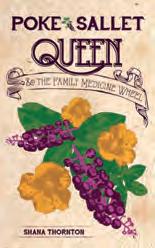
When Robin Ballard takes a writing course in college, she goes searching for answers about her father and wanders into the secret lives of her relatives. Set in Nashville and surrounding rural towns, Poke Sallet Queen and the Family Medicine Wheel offers a look into the superstitions and changes of a Middle Tennessee family from the 1920s to the 21st century.

Three total strangers, all with something in common, arrive at the same island, on the same day, desperate for the vacation of a lifetime. They arrive to find all as it should be—paradise. However, things are not always as they seem... and this trio quickly find themselves getting more than they bargained for.
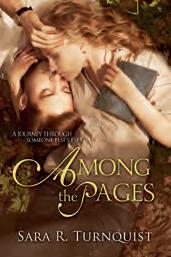
Brianne is a somewhat naïve college freshman. She becomes disillusioned as her professors and peers challenge many of her long-held beliefs. When she finds a diary that belonged to a distant relative, she is soon drawn into the story of a passionate woman who seems to whisper from the past—idealist Margaret in 1915 New York.
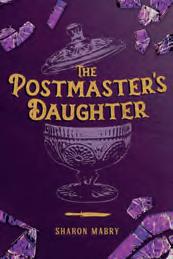
The Postmaster's Daughter is a 1930s murder mystery set in Appalachia. When a marriage proposal brings together two families in East Tennessee, the wealthy and powerful Cantrells and the hardworking and respected Putnams, everyone is shocked by a sudden murder that halts the union.
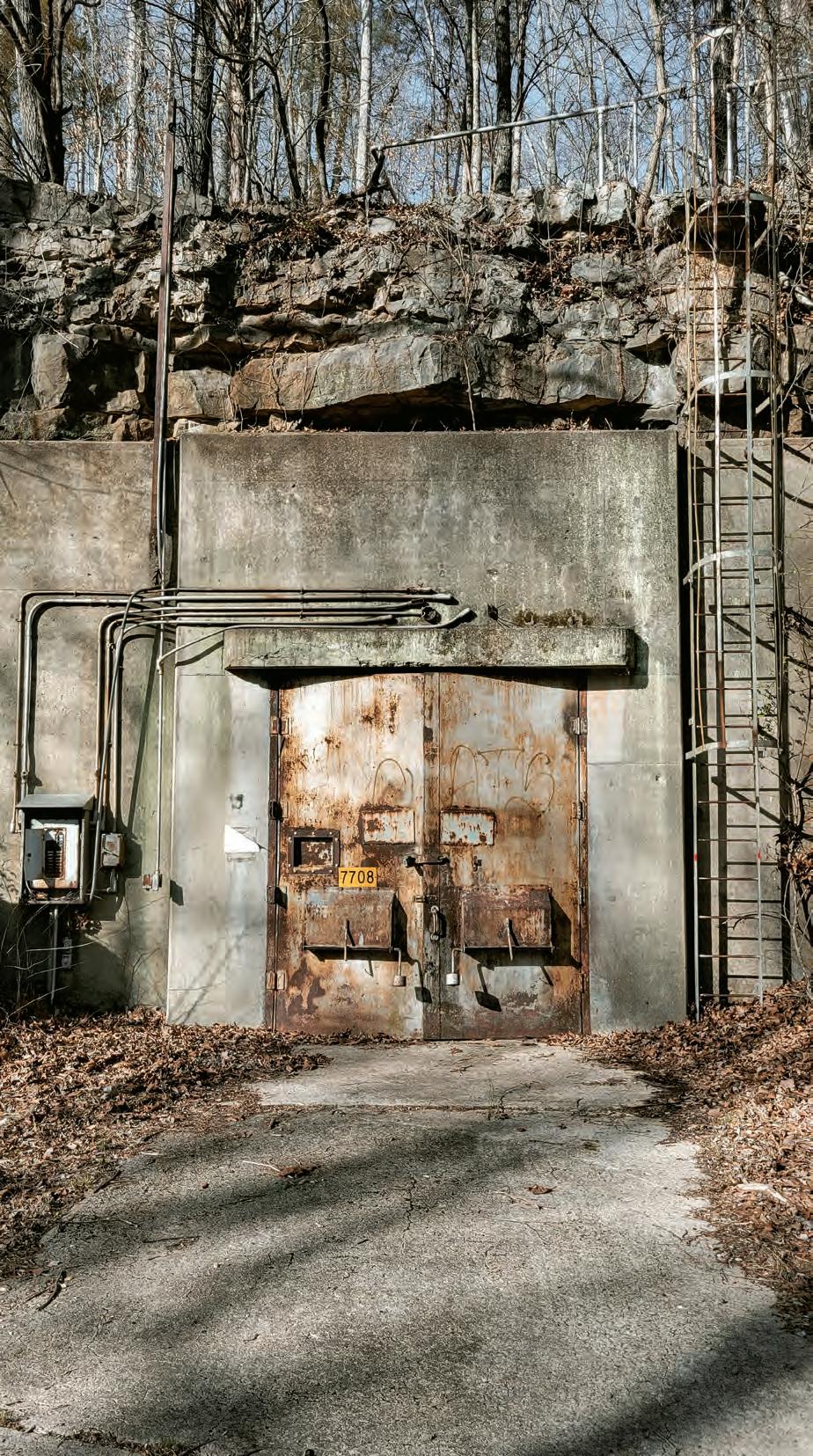


“These flaps were built into the doors, so if there was an explosion inside, the air would come out without blowing the doors off,” explained Ronald Grayson as he reached for the lock. Grayson is the Cultural Resources Program Manager at the Fort Campbell Directorate of Public Works.
From the exterior doors, the next entry point is 750 feet away. Visitors are enveloped in darkness, except for the glow of flashlights as they walk inside. The echo of voices bouncing off the fortified concrete walls and the marked chill signal how deep the tunnel runs into the earth before reaching the next gate. At this stop, steel cross bars extend from the concrete floor up to the curved ceiling.
“I've heard three or four different stories about why these bunkers are nicknamed ‘The Birdcage,’ one of which is this gate,” Grayson said. “This domed wire mesh has the semblance of a birdcage.”
Others say the namesake refers to protective containers fastened around components of the nuclear weapons that were stored separately to avoid activation. Still, others say it was a reference to the restricted area that was surrounded by four chain-link fences, topped with barbed wire, and included one electrified fence.
“The area was so secure, you felt like you were in a birdcage,” Grayson said.
Just past this point is another set of steel doors, 11 feet high and three inches thick. “These blast doors were designed with hydraulics to first jack up then sink down into a recessed slot.” Grayson said. One door was affixed with a large hook shape on top, the other having the eye that would interlock to further contain a blast.
Through the final passage, the inner chamber comprised four similar cells secured with bank vault doors. Each cell contains rows of steel, cubby-like compartments. This is where nuclear weapons were stored 60 years ago during an operation so secure that, except for artist renderings, imagery is nearly non-existent.
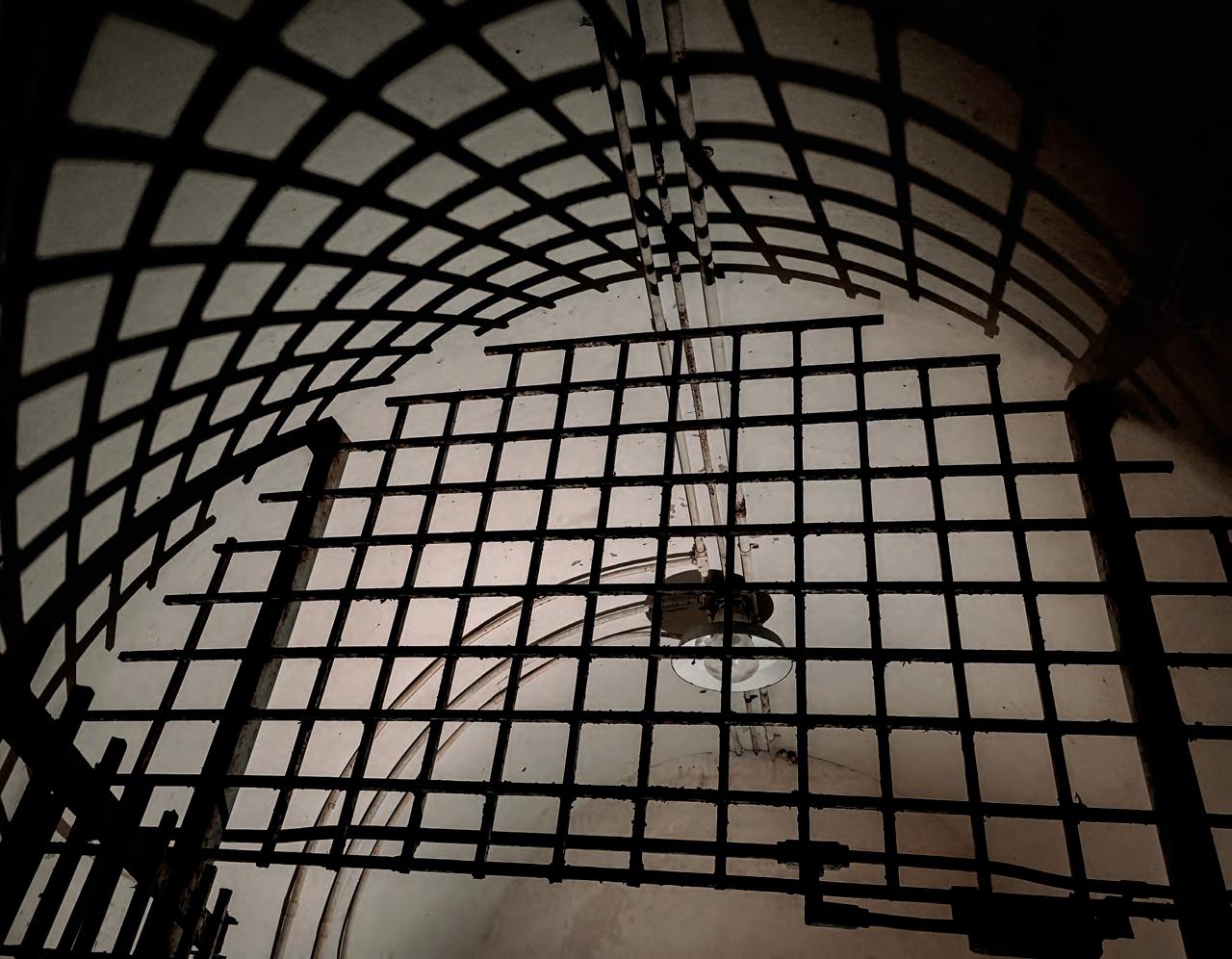
BUNKERS AT CLARKSVILLE BASE WERE CONFIGURED TO SUPPORT NUCLEAR WEAPONS TECHNOLOGY IN ITS INFANCY. The nuclear components were stored separately from the high-explosive components and assembled only when they were needed.
Steel cubbies and protective containers mitigated concerns that placing the nuclear materials too close to one another could trigger a release of radiation. The magnitude of the potential danger associated with assembly and storage of nuclear weapons required the most significant and complex security measures of the Cold War era.
Clarksville Base is the second of six nuclear storage facilities built in the United States during the Cold War era. The base located on Fort Campbell Army Post was among 13 atomic weapons storage facilities established by the Atomic Energy Commission and the Armed Forces Special Weapons Project in the late 1940s. The remaining seven sites were at bases hosted by European allies.
Construction began in 1947, and the first nuclear weapons were stored in 1948. Research indicates the location was chosen because of its proximity to multiple transportation systems, as well as its inconspicuous position on Fort Campbell.
At one point, Clarksville Base stored one-third of all the nuclear weapons the United States owned.
At the height of operations, Clarksville Base encompassed approximately 2,600 acres inside the Fort Campbell boundary. A base within a base, it had its own barracks, chapel, pool, gyms and administrative facilities. Other structures were designed for assembly, maintenance and disassembly of nuclear capsules, along with showers for decontamination in the event of an accidental release of radiation.
The Air Force administered support and security until 1952, when the U.S. Navy took over operations with Marine Corps guards.
EXCERPTS OF INTERVIEWS FROM THE 2010 CLARKSVILLE BASE ORAL HISTORY PROGRAM OFFER A GLIMPSE OF HOW CAUTIOUS PERSONNEL WERE ABOUT DISCUSSING THEIR WORK INSIDE THE FENCE LINE.
“A lot of people didn’t know what was going on, [even] if there was any such thing as Clarksville Base,” said Edward Grady, who served in the Navy during World War II, enlisted in the Air Force in 1948 and arrived at Clarksville Base in 1949. “Local residents hinted but didn’t ask, and the personnel assigned to the base knew not to discuss anything,” he said.
“This area was known as the Q-Area, which was the highest classification that the Atomic Energy Commission had for access,” Grayson said as he continued the tour.
“In the heyday of this area, you could not be here by yourself regardless of clearance. Workers moved about in two-person teams, and you had to have a Q-Clearance.”
Workers received a color-coded badge every day that would hang on the front of their uniforms. “If you had the wrong color badge on the wrong day, the Marine Corps guards were authorized to use deadly force,” Grayson said.
Military personnel who worked at Clarksville Base were not allowed to wear their uniforms in public. This was another measure of security to avoid drawing attention to the Air Force or Navy personnel stationed at the Army post. They arrived in civilian clothes, passed through the Fort Campbell gate and then through the Clarksville Base gate. They changed into uniform, conducted the day’s business, then did the reverse on the way home.
Each day, personnel completed multiple layers of security checks. They worked in areas where armed guards patrolled the fence line and were posted inside pillboxes, concrete structures located across from the bunkers where nuclear components were stored. Inside the pillboxes, positioned only a few feet above the ground, guards worked in six-hour shifts and were not allowed any distractions.
A two-person team used a special phone line to deliver a specific code and gain access through the bunker’s exterior blast doors. At the inner cage on another phone, a code would signal that personnel were clear to buzz in.
“The person receiving the code was called ‘The Voice.’ Nobody knew who it was. And in talking with old timers,” Grayson said, “‘The Voice’ wasn’t personable. There would be no small talk. Their only task was to receive the codes and grant access at each entry point.”
Then to enter the four cells, two different combinations were needed to open the bank vault doors. No individual had both combinations.
Work in these bunkers mainly involved storage and movement activities, which were meticulously followed because of the volatility of the material. As technology improved, the process to store, maintain and assemble nuclear weapons also improved. The early bunker’s original design and use became obsolete.
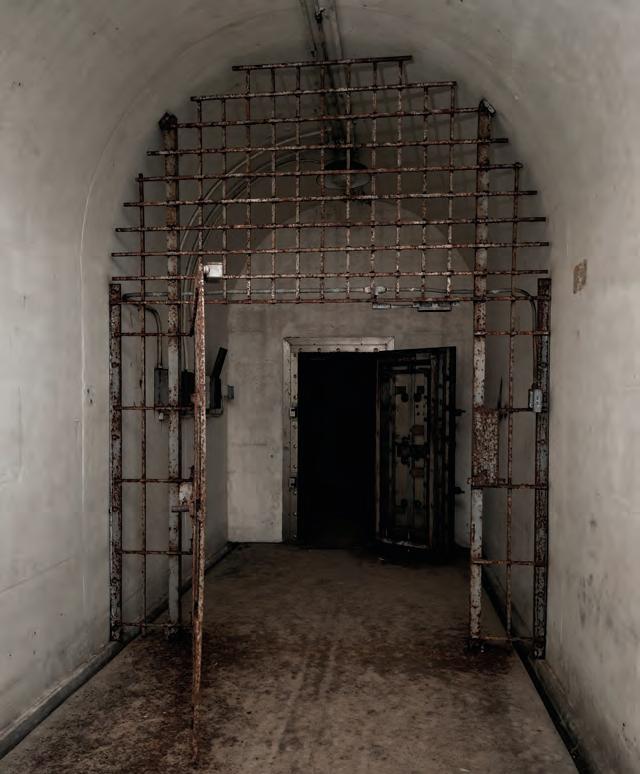
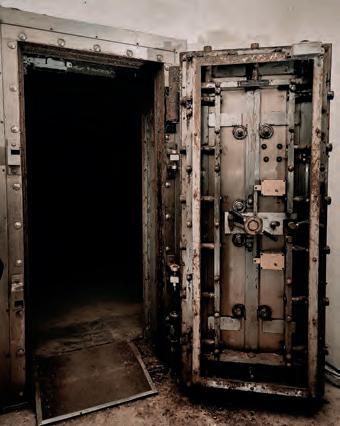
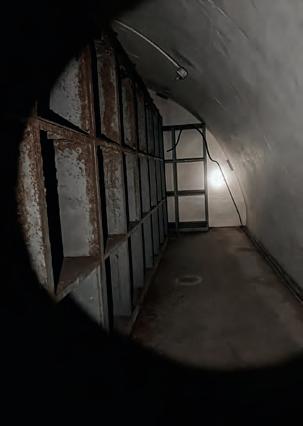
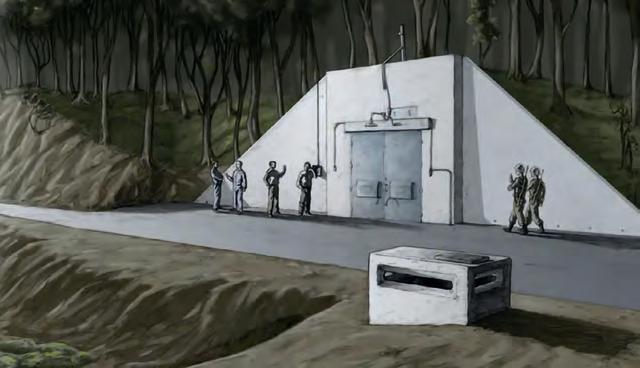
In 1965, the modification facilities were deactivated and operations at Clarksville Base ended. Fort Campbell accepted control of the facility in 1969.
Personnel who served on Clarksville Base rarely discuss their work, if at all, and still in limited doses. The common thread among them is unwavering loyalty and duty in service to the nation. “It was something we had sworn to do,” Grady said.
Today, the bunkers at Clarksville Base stand empty except for occasional bats, spiders and small critters that slip through the cracks of the locked doors. Eligible for listing on the National Register of Historic Places (NRHP), Clarksville Base is preserved for its historic significance in association with the Cold War.
Fort Campell’s Don F. Pratt Museum and the Directorate of Public Works Cultural Resources Program staff conduct tours of the bunkers for local historical societies, reunions and other interested groups.
“We have the responsibility of managing these historic properties,” Grayson said. “They tell a unique piece of our collective history.”
Those who visit the bunkers have an opportunity to explore the mystery that surrounded Clarksville Base from the 1940s to 1960s. They may hear a story or two. There is one about security being so tight, that even the post commander was not authorized access.
“When a defiant commanding general ordered a reluctant pilot to fly him over Clarksville Base in restricted air space, he was shot at by a guard,” Grayson said. “And when they tried to court martial the guard who shot at the helicopter, he wasn’t reprimanded for shooting at the general—he got reprimanded for missing.”
Today, Clarksville Base and the former Q-Area are spaces used for recreation and physical training.
“This piece of history along West Fork Creek is really something to experience,” Grayson said. “Reading about it on a website or watching a video is not going
to have the same impact as walking in here and feeling the echoes. They were built to store nuclear weapons, and they will be here long after we are gone.”
Information about Clarksville Base is available at home.army.mil/ campbell/clarksville-base.
Clarksville Base Historic District, December 2010 Report contributed to this article.
Brendalyn Carpenter Player served 20 years as a federal civilian Army Public Affairs professional. In January 2024, she retired from her position as the Director of Public Affairs at Fort Campbell, Kentucky. The opportunity to share about the cultural and historical significance of the Army installation, including escorting multiple groups on tours of Clarksville Base, is a highlight of her career. Special thanks to the staff of the Fort Campbell Cultural Resources Program and the Don F. Pratt Museum who supported this project. Brendalyn currently serves on the Customs House Museum & Cultural Center Board of Trustees.
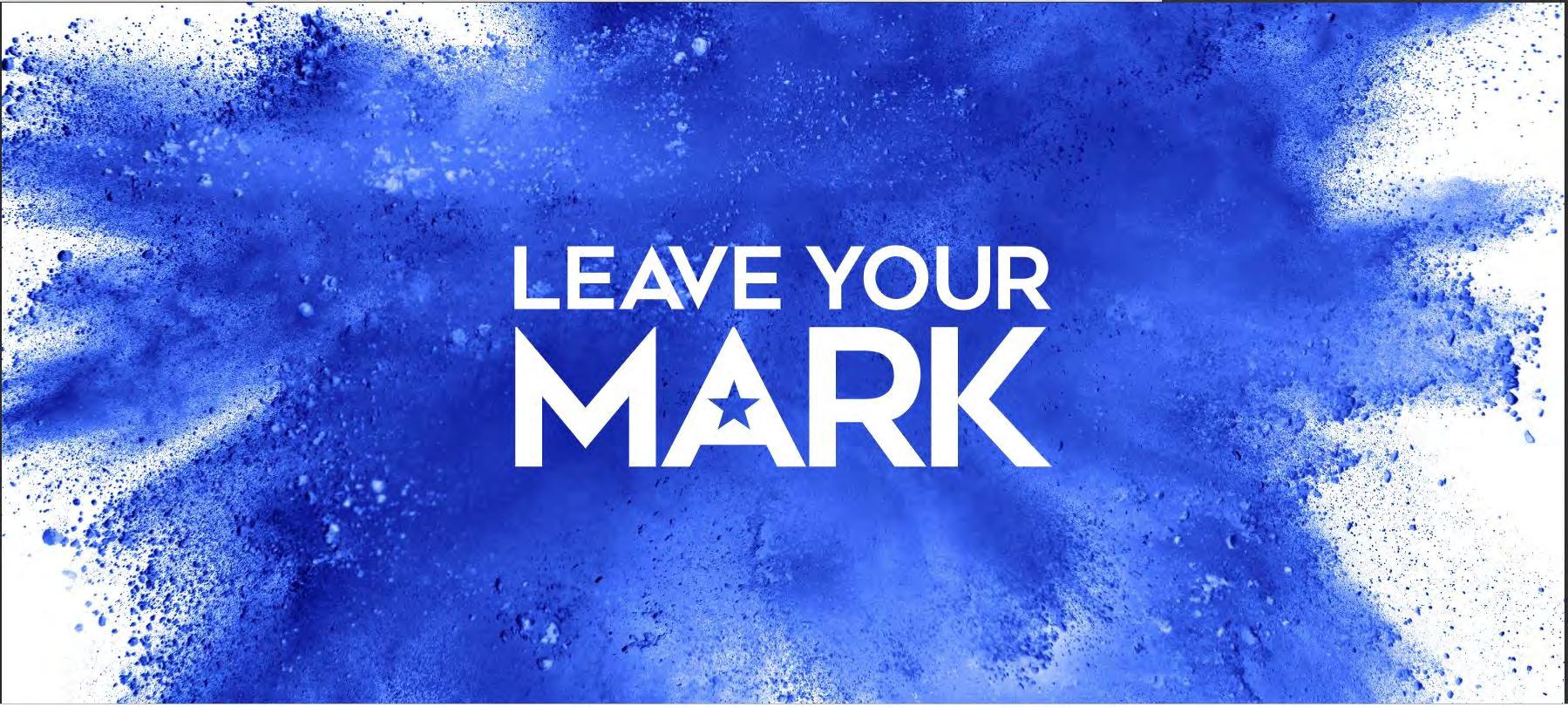
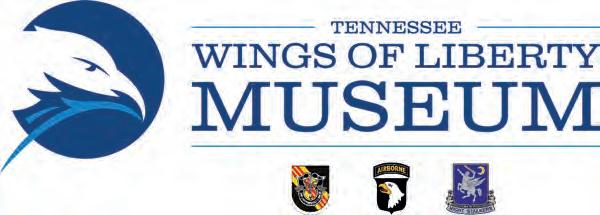
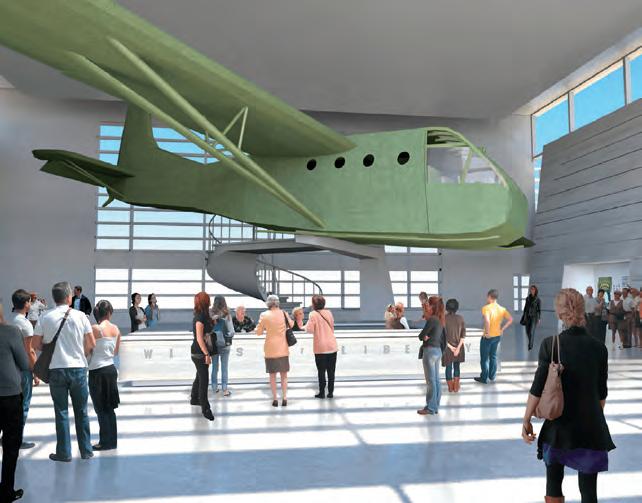
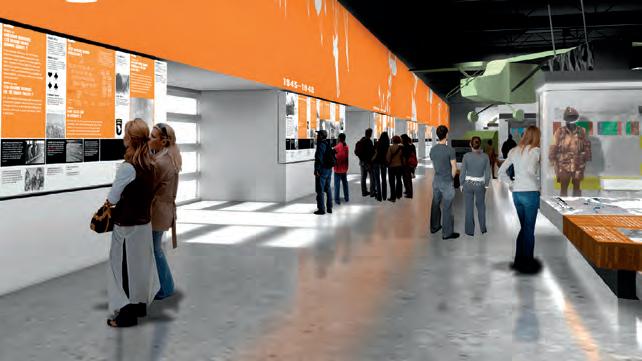

This summer, construction will begin on the long-awaited Tennessee Wings of Liberty Museum at the corner of Fort Campbell Boulevard and Tiny Town Road.
“The purpose of this museum is to honor the history and legacy of the 101st Airborne Division, 5th Special Forces Group and 160th Special Operations Aviation Regiment,” said MG (Ret) Brian Winski, President and CEO of the Fort Campbell Historical Foundation. “We expect the first phase of the museum to be open to the public in 2025.”
That first phase will include the museum’s main exhibit hall—about 40,000 square feet dedicated to telling the story of these units that call Fort Campbell home. The hall will begin with World War II and move forward through time, focusing on the historic impact of the Fort Campbell Soldier. The exhibits will also delve into the installation’s history and include information about different functional aspects that make the Army run.
The museum will be immediately accessible to everyone right off Highway 41A, so visitors will not be required to enter Fort Campbell through the gates. Admission will be free, and the museum is expected to be particularly popular with bus tours, military reunions and as an educational resource for visitors of all ages. Educational programs are a top priority, and the Fort Campbell Historical Foundation has already forged partnerships with regional school systems and universities.
The Tennessee Wings of Liberty Museum is three decades in the making. While fundraising efforts are ongoing, the Foundation was able to secure $20 million in funding from the State of Tennessee in 2022, as well as an additional $1 million from Montgomery County and $1 million from the City of Clarksville.
The completed structure will span more than 60,000 square feet and include a multipurpose event space and exterior Memorial Park on a 33-acre campus. “Once it is complete, the Fort Campbell Historical Foundation will gift it to the Army, who will run and maintain it,” explained Winski.
Through powerful storytelling, the museum will portray events, campaigns and missions from the Soldier’s point of view. “You can’t just hope that American citizens are going to be inspired to service,” said LTG (Ret) Mike Oates, Senior Strategic Advisor for the Foundation. “It begins with educating citizens through examples of what other people have done in years past to serve our country.”
fortcampbell.com/wings-of-liberty
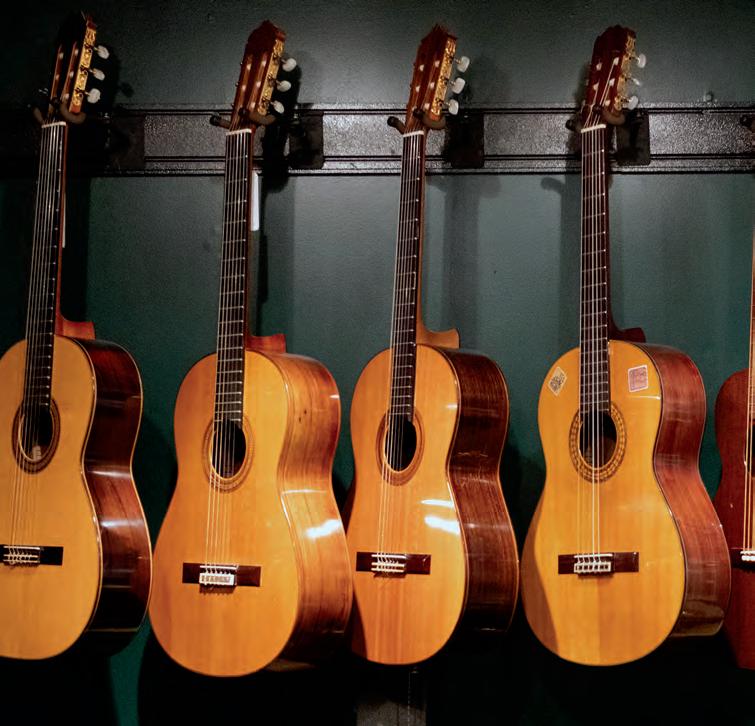

I don’t remember the first time I touched a guitar. I want to say I was an infant, but that may not be entirely true because my father sold his only guitar to bring me into this world. My parents met at a music store in Austin, Texas called J.R. Reed’s. Sadly, it is no longer in business, but because of this kismet location, I was born into the musical sphere as easily as flowers bloom in the spring. My mother worked in sales, my father in instrument repair, and while I inherited only my mother’s voice rather than my father’s playing, I do remember the first song I learned to sing: “Get Back” by The Beatles. I didn’t sing the words correctly, and I know this because as I aged, I learned the actual words to that song. My father never corrected my childish delight in singing while he played, and music filled my home.
Fast forward 27 years and my son came into this world born to musicians as well—his father, a drummer who also worked in a small music store in college, and his mother, a vocalist. It came as no surprise when my son picked up a guitar for the first time with his grandpa that it would become a lifelong endeavor. He snagged the whole musical package—singing, strumming, drumming, playing—a piece of each of us. His guitar lessons continued at Vanessa Green Guitar Studio with Kevin and drumming with his dad. The singing and piano playing came natural, self-taught. His voice dropped to a bass, a shock to us all, and he croons Johnny Cash and Colter Wall as well as the artists themselves.
As my son grew into an accomplished musician playing everything from classical to rock to country to metal, I envied his gift. I longed to make music myself, to feel the vibrations of the strings beneath my fingertips, to strum and sing in
harmony. Enter COVID-19 and a lot of time at home, I decided I was finally going to learn to play, and he could teach me. He tried—but every time I attempted to play, I felt like a failure. My small hands fumbled over the frets, the chords sounded discordant and ugly, and the pads of my fingers hurt. While I eventually learned a few songs, I could never get the hang of singing and playing simultaneously. Also, our lessons weren’t without a bit of strife as I was not the best student. After my second lesson, I was trying to “tune” the guitar and broke a string. He grounded me from the guitar for two days. I’ve never laughed so hard.
I wanted to play like my son, like my father, but I didn’t really desire to move through the stages of learning. This is ironic (in its realest sense) because as a teacher, I am very aware of the process. Initially, you are a beginner with little knowledge, and with practice and dedication, you become an expert. I wanted to go from beginner to expert overnight—to skip all the messy bits in-between: the sore hands, the calloused fingertips, the frustration of a muted chord. I’d grown up with music, so why couldn’t I just do this? I became so fixated on being perfect from the start that I lost the joy of the journey. Admittedly, I gave up. My guitar, Annabel Lee, gathers dust in the corner of my den unless my son comes over to play her. I believe wholeheartedly she enjoys his visits, his ability to make her come alive and fill my home with music again.
It would be simple for me to feel sad about quitting. The adage of "winners never quit, and quitters never win” is one we’re all familiar with. It’s bad advice. I realize that’s contrary to what so many believe, but the truth is, we can’t all do everything. We can’t all be the next the "big thing” wailing on a guitar for all
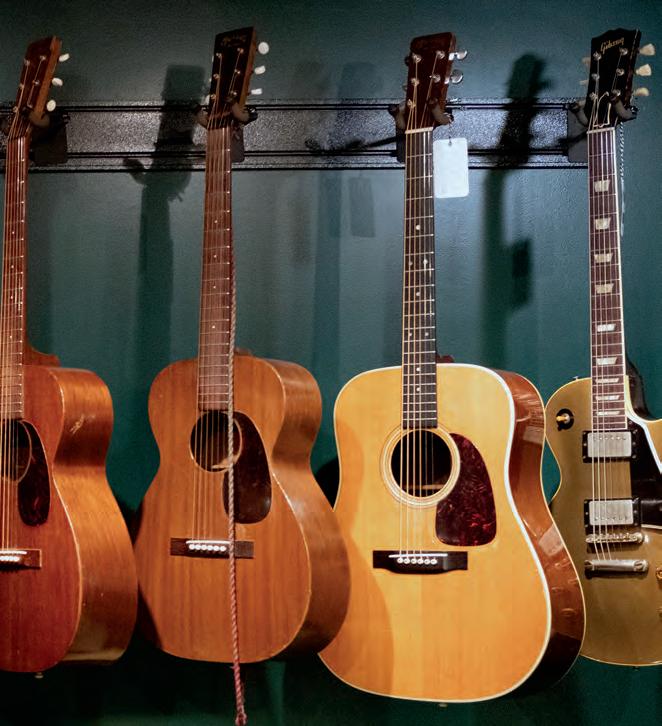
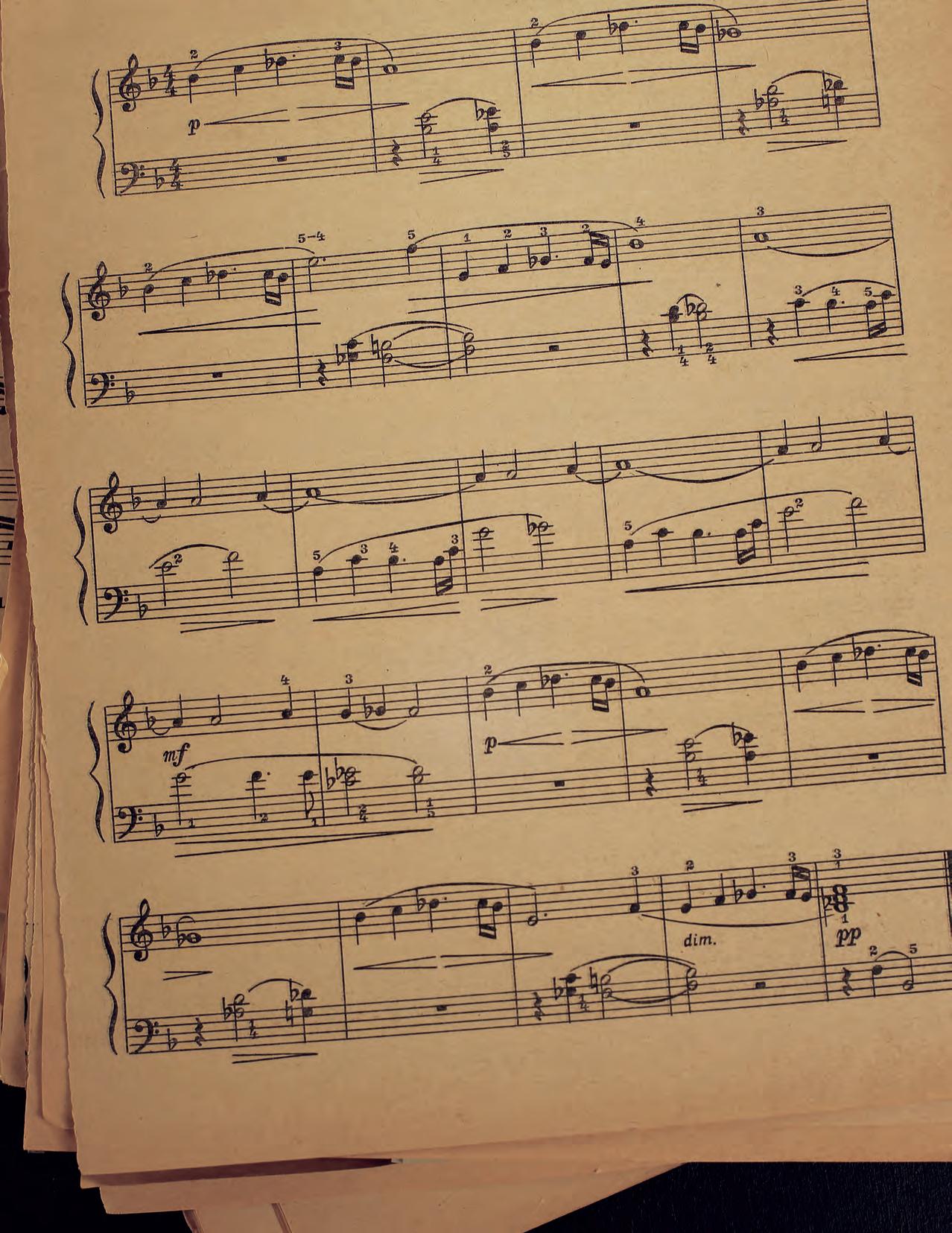

the instrument is worth, but we can all learn to appreciate and bask in the indulgence others’ talents bring us, to hear the music deep in our soul, to drink in art and culture and genius. Every day new musicians join this vibrant community, walk into hometown music stores like Collins Music Store from the past, or today, Mom and Dad’s Music on South Tenth Street. These music stores are the beginning of something wonderful.
My father eventually replaced the guitar he sold for my birth when I was in my thirties. The original would have been 51 years old now, a D-28 Martin, and my son plays its replacement when we go for a visit. From the music room, I hear them blending in pace, learning new songs and enjoying their time together. Sometimes I’ll pop in and sing along, most of the time I just listen. My father still says, “what [he] got for [the guitar] was way better,” and I’m inclined to agree with him (this time). All it took was: One music store. One community of musicians. One moment in time. And the song plays on.
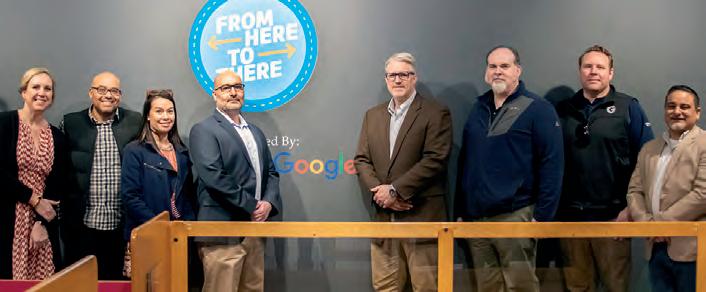
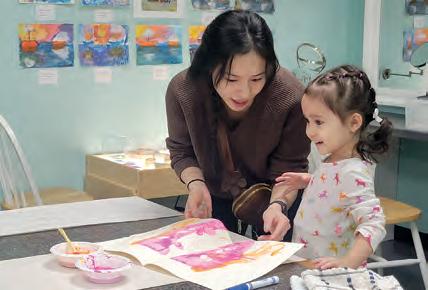

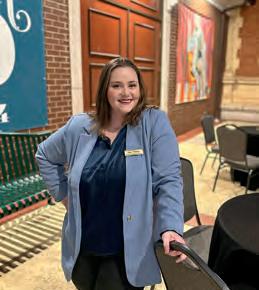
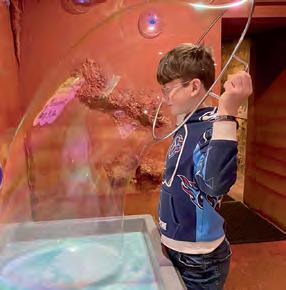
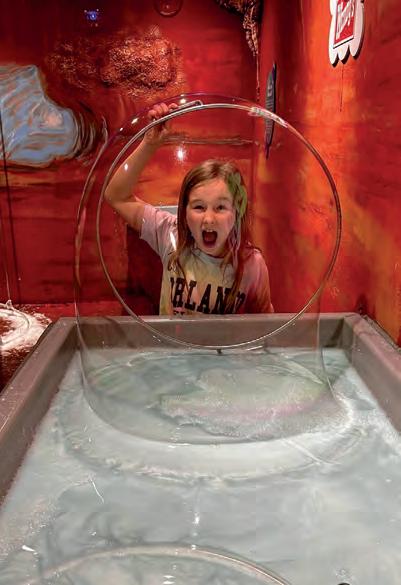
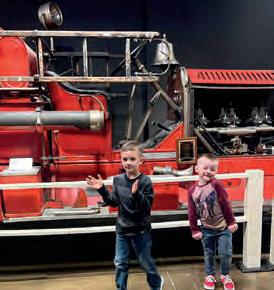
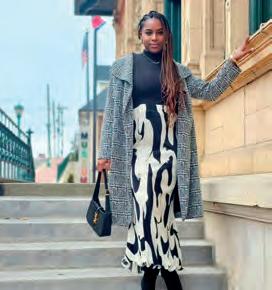

Active library card holders may check out a family pass at participating libraries. The Museum pass is good for seven days and will grant four adults and any household children entrance to the Museum. Just like checking out a book, patrons will return the pass to the Circulation Desk at the library after their visit.
Clarksville-Montgomery County
Public Library
350 Pageant Lane, Clarksville, TN 37040 931-648-8826 | mcgtn.org/publiclibrary
APSU Felix G. Woodward Library
601 College Street, Clarksville, TN 37044 931-221-7346 | library.apsu.edu
White House Library
105 B College Street, White House, TN 37188 615-672-0239 | youseemore.com

